“What is perfection in love? Love your enemies in such a way that you would desire to make them your brothers … For so did He love, Who hanging on the Cross, said ‘Father, forgive them, for they know not what they do.’” (Luke 23:34)
ChurchPOP
4 Essential Facts About the Ascension of Jesus into Heaven Every Catholic Should Know
Catholics commemorate the Ascension as the ending of Jesus’ earthly ministry and the beginning of his reign in Heaven. This celebration begins our preparation for the outpouring of the Holy Spirit at Pentecost.
The Catechism of the Catholic Church states,
“Jesus’ final apparition ends with the irreversible entry of his humanity into divine glory, symbolized by the cloud and by heaven, where he is seated from that time forward at God’s right hand.” (CCC, 659)Here are four things to remember about the Ascension of Jesus into Heaven, followed by some of our favorite prayers to mark the occasion:
 Caroline Perkins, ChurchPOP
Caroline Perkins, ChurchPOP1) What happened in the Ascension?
Marks the moment Jesus returned to His Father in Heaven and took His place at the right hand of God.
2) What is the Bible verse for the Ascension?
Recorded in scripture (Acts 1:9-11)
3) What can we learn from the Ascension?
Reminds us that our ultimate goal as Christians is to be with God in Heaven and that Jesus will come again.
4) When did the Ascension of Jesus happen?
Jesus ascended into Heaven 40 days after Easter and nine days before Pentecost.
Ascension Day Prayer
Let us Pray:
Dear Lord Jesus Christ,
Right before your Ascension into heaven,
you told your apostles to be His witnesses
to the ends of the earth upon receiving the Holy Spirit.
May I be similarly inspired to spread your Gospel message in word and deed, according to your will for me.
And may I do so prudently and joyfully,
with your help, your guidance, and your grace!
And remembering this glorious event,
help me to seek what is above, Heaven,
where you are seated at the right hand of God the Father!
Amen.
Prayer Source: Our Catholic Prayers
And the Ascension novena prayer:
Jesus, I honor You on the feast of Your Ascension into heaven. I rejoice with all my heart at the glory into which You entered to reign as King of heaven and earth. When the struggle of this life is over, give me the grace to share Your joy and triumph in heaven for all eternity.
I believe that You entered into Your glorious Kingdom to prepare a place for me, for You promised to come again to take me to Yourself. Grant that I may seek only the joys of Your friendship and love, so that I may deserve to be united with You in heaven.
In the hour of my own homecoming, when I appear before Your Father to give an account of my life on earth, have mercy on me.
Jesus, in Your love for me You have brought me from evil to good and from misery to happiness. Give me the grace to rise above my human weakness. May Your Humanity give me courage in my weakness and free me from my sins.
Through Your grace, give me the courage of perseverance for You have called and justified me by faith. May I hold fast to the life You have given me and come to the eternal gifts You promised.
You love me, dear Jesus. Help me to love You in return. I ask You to grant this special favor:
(Mention your request).
By Your unceasing care, guide my steps toward the life of glory You have prepared for those who love You. Make me grow in holiness and thank You by a life of faithful service.
Amen.
Prayer Source: EWTN
Vatican Offers Plenary Indulgence for 'Seven Church Pilgrimage' After Historic Church Renovation for 2025 Jubilee Year
Walking in the heart of Rome, Romans and pilgrims alike pass through one construction site to the next as the Eternal City prepares for the Jubilee Year of 2025.
The Pope will open the Holy Door of Saint Peter’s Basilica and inaugurate the Jubilee Year on Christmas Eve, Dec. 24, 2024.
On the Feast of the Ascension, May 9, 2024, the Bull of Indiction of the Jubilee 2025 was read at Vespers celebrated by the Holy Father.
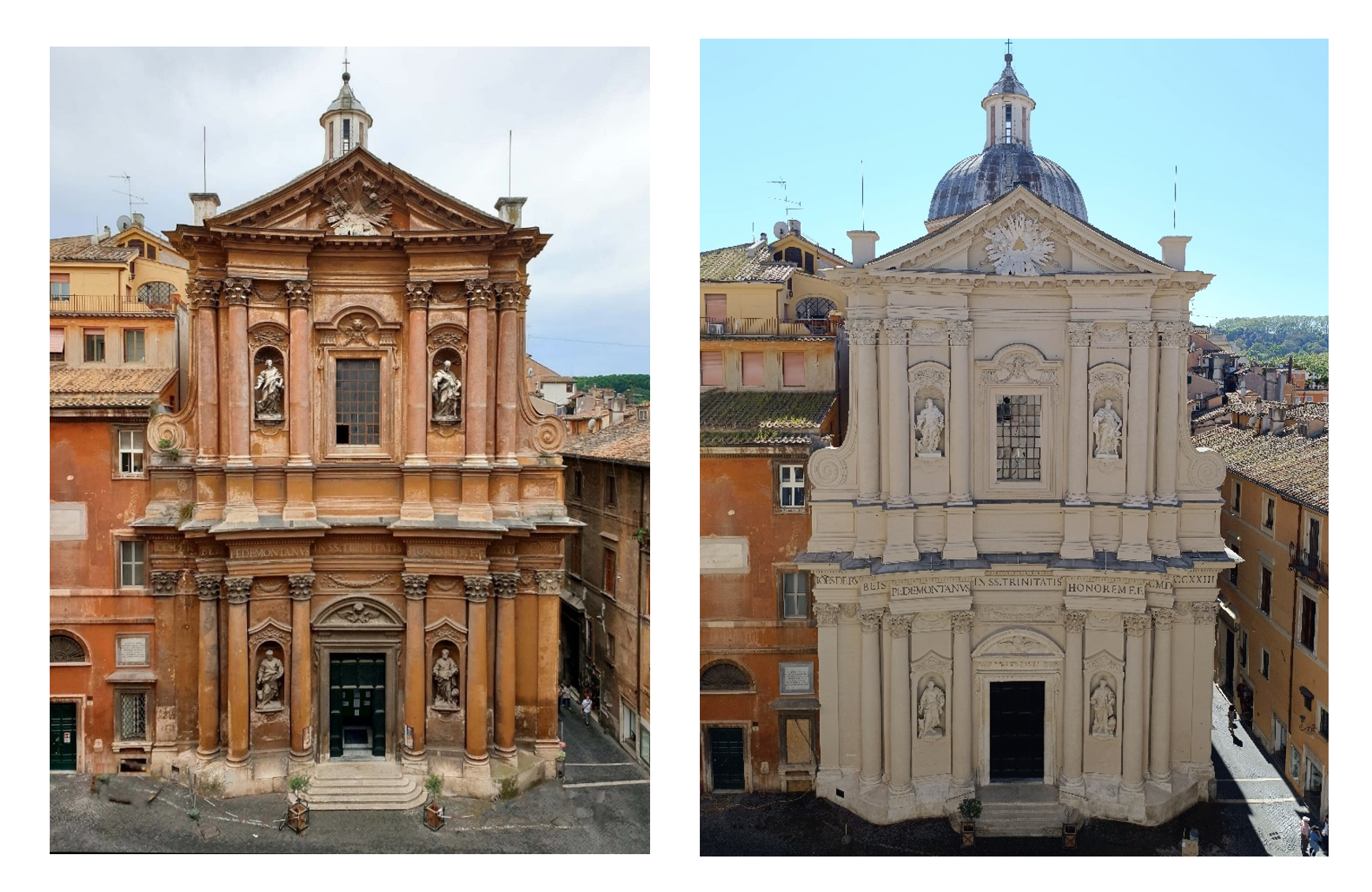 Civita Mostre
Civita MostreFirst Project Completed for the Jubilee Year of 2025
With the expected 35 million visitors to Rome for the Jubilee Year, the first project to be completed in conjunction with the Jubilee Year is significant. The renovation of the facade of Santissima Trinità dei Pellegrini (Most Holy Trinity of the Pilgrims) has given new life to a parish church in Rome.
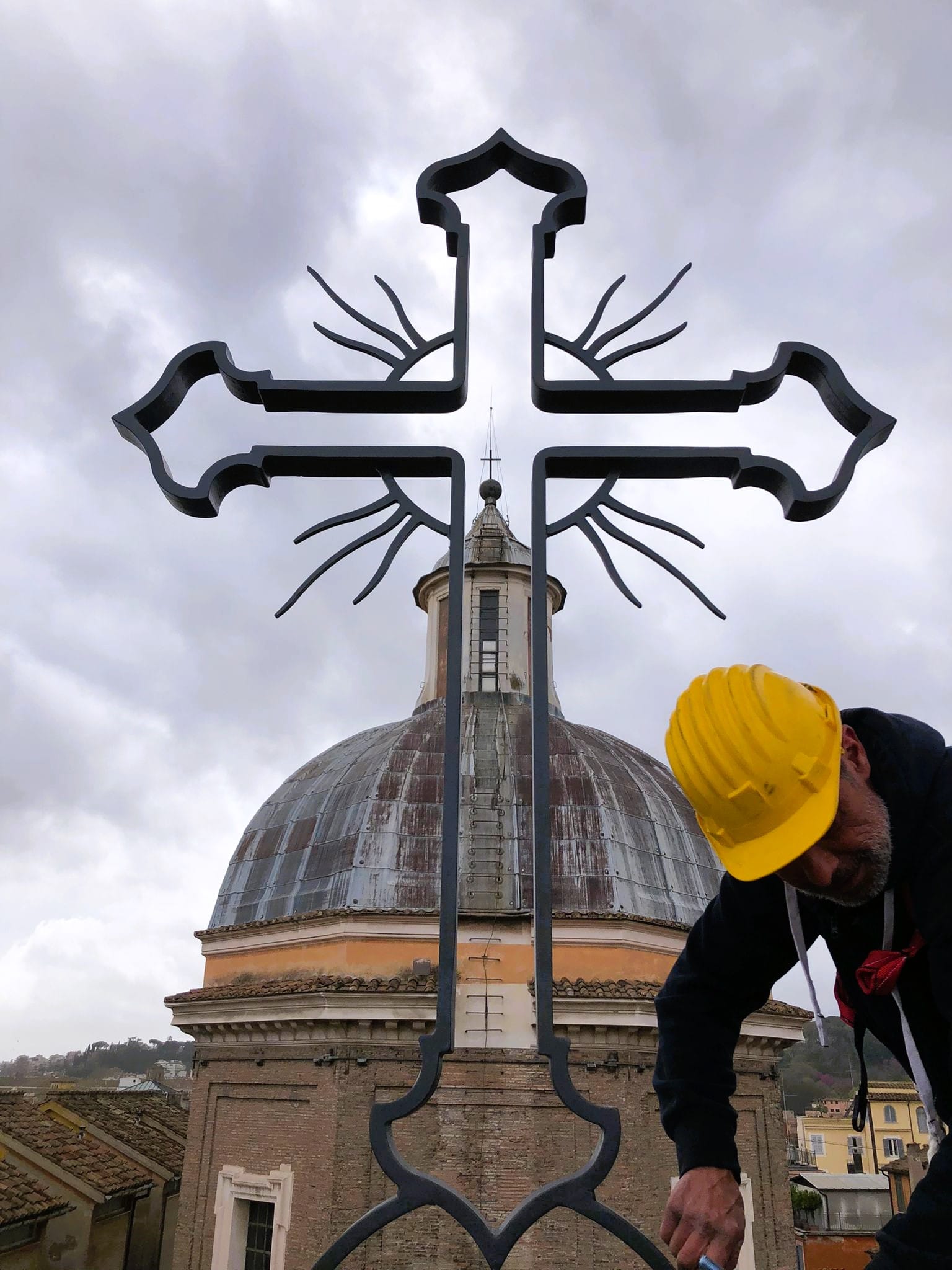 Civita Mostre
Civita MostreA Church Built for Pilgrims
In the old historic center of Rome, the Church of the Most Holy Trinity of the Pilgrims is just steps away from Piazza Farnese and nestled next to Ponte Sisto and Via Giulia. The church dates from the early 17th century, consecrated in 1616.
It was built by the Archconfraternity of the Holy Trinity of Pilgrims, founded and directed by Saint Philip Neri, with the specific mission of welcoming and assisting pilgrims in Rome.
The church therefore traces its roots to the mission of Saint Philip Neri, known as the third Apostle of Rome, who dedicated his work to bringing the faithful back to a lively and zealous practice of the faith through liturgy, processions, and devotions. It is presently under the care of the Priestly Fraternity of Saint Peter (FSSP).
 Civita Mostre
Civita MostreThe New Facade
On April 18, 2024, the newly restored facade was illuminated for the first time.
Earlier that day, the project was presented in the Press Room in the Chamber of Deputies of Rome. The Special Superintendent of Rome Daniela Porro was present, as well as the parish priest Father Brice Meissonnier, FSSP, highlighting the collaboration necessary between Church and State in promoting projects of restoration in an ancient city like Rome.
“The important restoration,” Porro said, “is part of a project that straddles culture and spirituality, which brings together the history of this church and of the city of Rome itself with the initiatives for the coming Jubilee.”
The project highlights, “the recovery of beauty,” she continued. “The recently completed restoration of the facade and its illumination are the first pieces of a larger work,” the Roman official noted, “to restore [the church] to its original state, to its original splendor.”
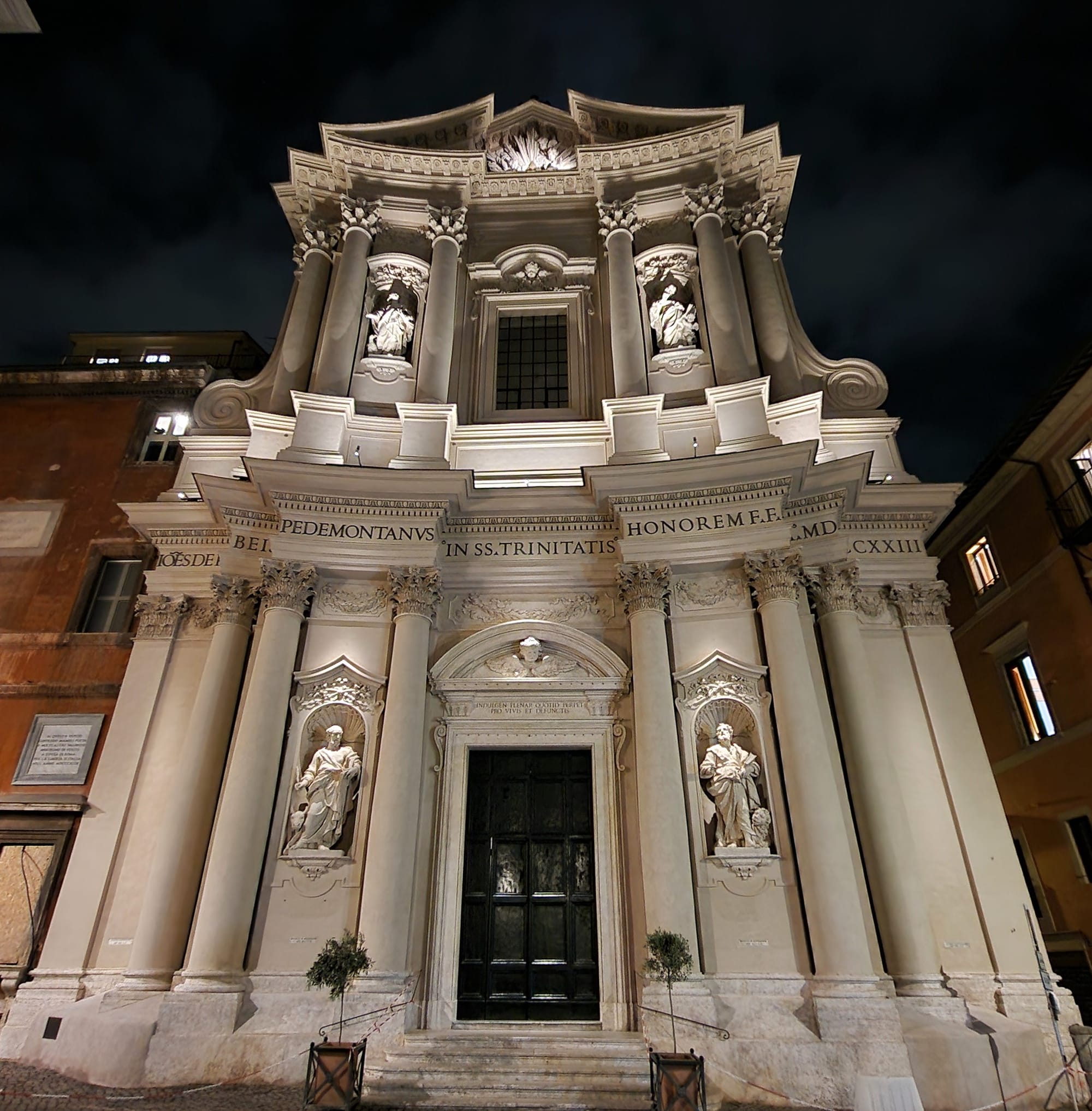 Civita Mostre
Civita MostreMore than a Facade
Beyond the resplendent facade lies a deeper pilgrimage, woven into the fabric of tradition and hospitality. As the Jubilee of 2025 beckons, the parish priest, Father Brice told us, “The Archconfraternity of the Most Holy Trinity of Pilgrims and Convalescents, founded in Rome by Saint Philip Neri in 1548, will resume one of its most ancient traditions,” extending a heartfelt welcome to pilgrims with a special pilgrim itinerary for the Jubilee.
Father continued to explain, “In fact, the purpose of this Archconfraternity was to welcome and accommodate free of charge the pilgrims who came in large numbers to the Eternal City for the Holy Year.”
The Archconfraternity and parish no longer possess these buildings to accommodate pilgrims. But, Father Brice noted, “The Archconfraternity will still offer the rite of welcoming pilgrims.”
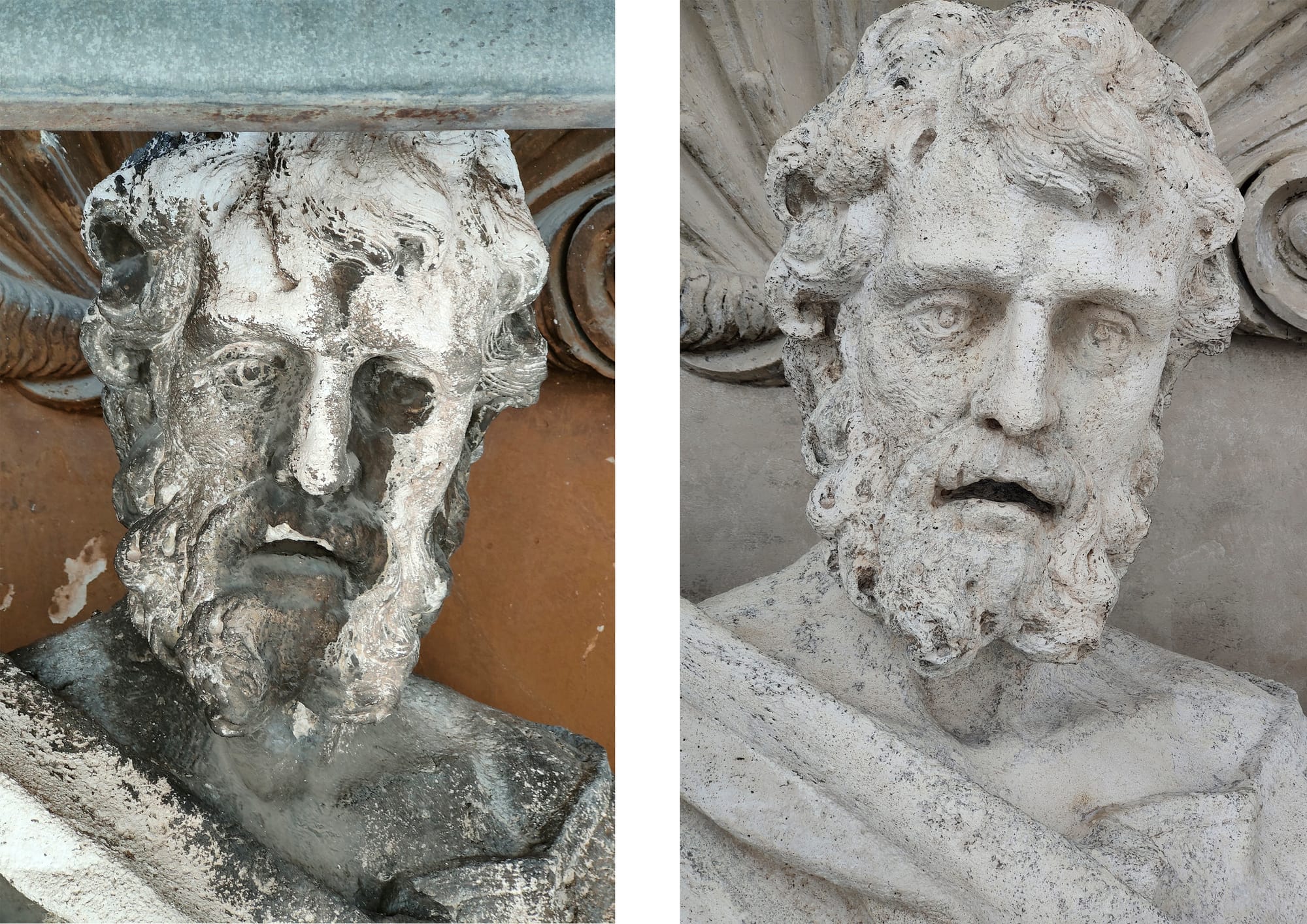 Civita Mostre
Civita MostrePilgrim Credentials
During the Jubilee Year, pilgrims to Rome can receive a special pilgrim’s document from the Archconfraternity. Once a week in the parish church, the confreres will welcome pilgrims for the ceremony of washing their feet.
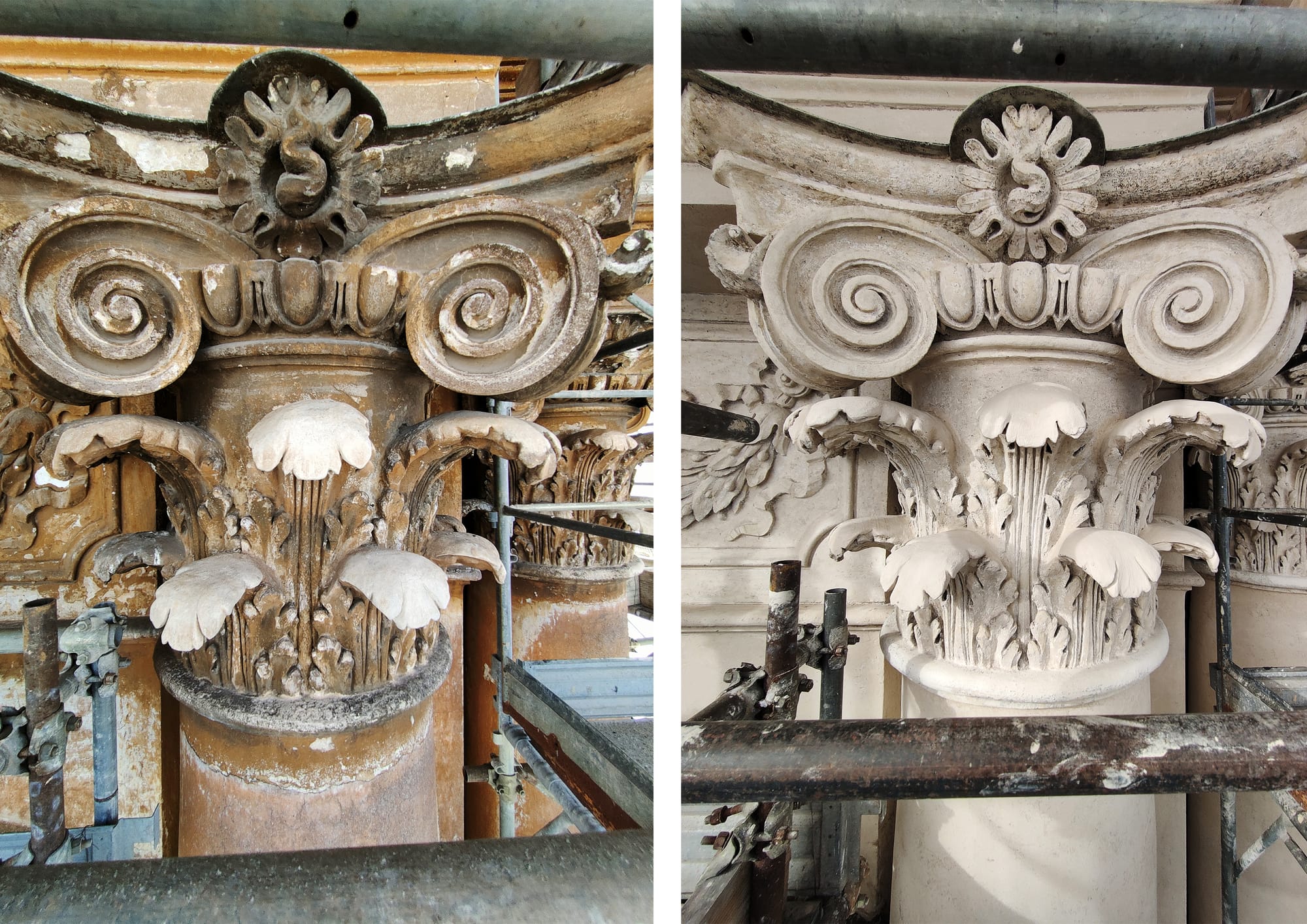 Civita Mostre
Civita MostreFather Brice explained, “This ritual desired by Saint Philip Neri, repeats the gesture of Jesus washing the feet of his disciples.”
This will be the ceremonial sign of the beginning of a pilgrim’s Jubilee Pilgrimage.
The pilgrim will then be given a “credential” by the confreres of the Archconfraternity to be signed with a stamp in each of the four major basilicas of Rome: Saint Peter’s Basilica, Saint Paul’s Outside the Walls, Saint John Lateran, and Saint Mary Major.
Ideally, the pilgrim will also visit the additional three minor basilicas which, with the major basilicas, make up the “Seven Church Pilgrimage” of Saint Philip Neri. These three minor basilicas are the Holy Cross in Jerusalem, Saint Sebastian, and Saint Lawrence Outside the Walls.
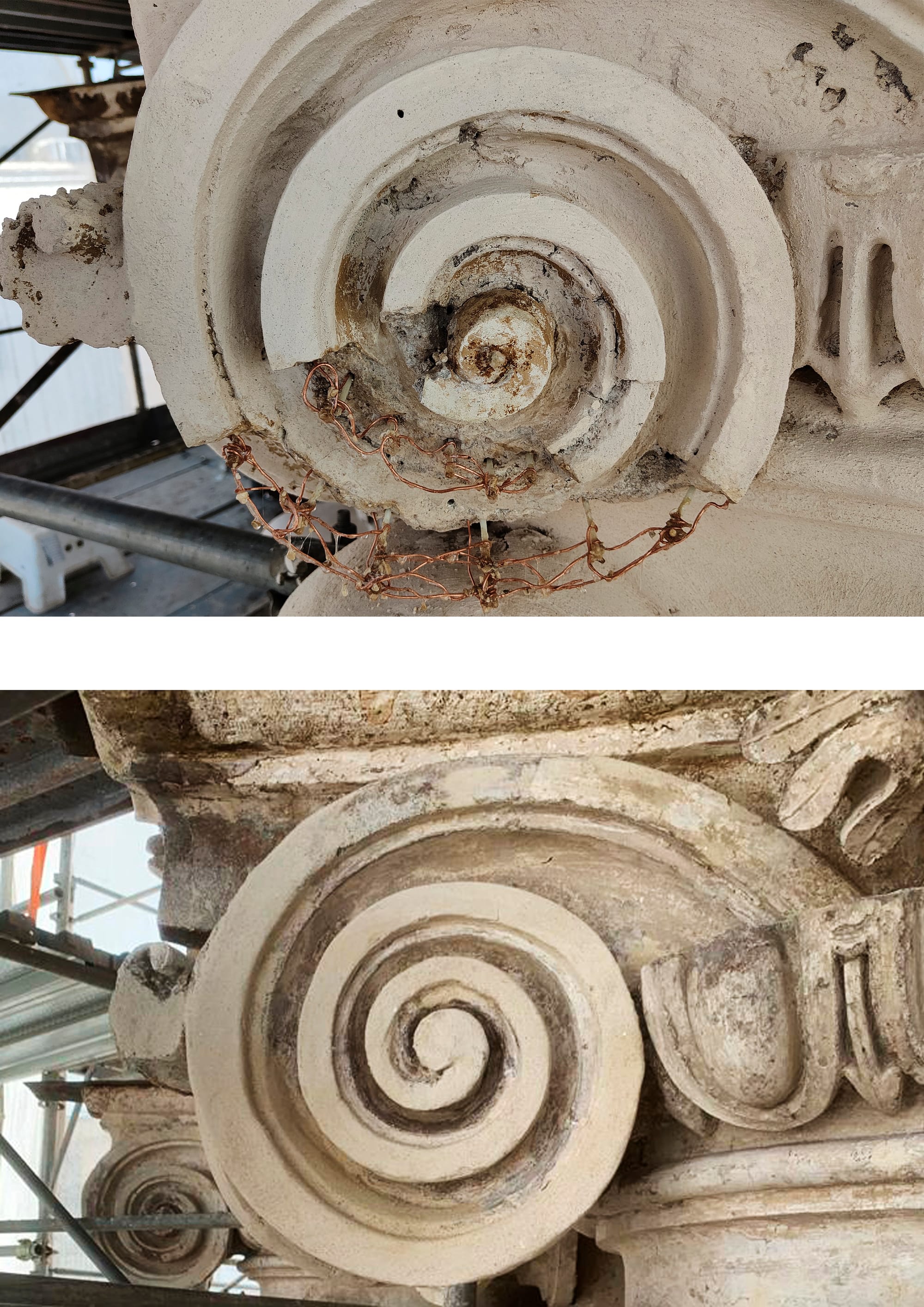 Civita Mostre
Civita MostreAt the end of a jubilee pilgrimage, with a stamped “credential,” the pilgrim will return to Santissima Trinità dei Pellegrini to collect a “diploma.” The diploma will testify to the visit to the four major basilicas, necessary to receive the plenary indulgence of the Jubilee Year, or to the seven basilicas of the “seven church pilgrimage.”
Father Brice highlighted, “This diploma will be the visible sign and memory of completing the jubilee pilgrimage.”
7 Simple Ways to Honor Mother Mary During the Month of May
The month of May is a special time for Catholics around the world, as it is dedicated to the veneration of Mother Mary.
Special devotion to Mary has been a part of Catholic tradition for centuries, and the month of Mary serves as a time for us to honor and show our love for the Blessed Mother.
Here are 7 Ways to Honor Mother Mary during the Month of May:
 Caroline Perkins, ChurchPOP
Caroline Perkins, ChurchPOP1) Make a Marian Shrine
Set up a special place in your home, dorm, office, etc. in honor of our Blessed Mother! All you need is a statue or image of the Virgin Mary. Consider gifting her with a vase of fresh flowers and take the time to visit this special place during your prayer routine.
It can be as extravagant or as simple as you feel called to do.
2) Plant a Marian Garden
Spring has sprung! Plant a garden dedicated to Our Lady. If you don’t have the space to do so, consider keeping a vase of fresh flowers in your home or gift a bouquet to the Marian shrine at your parish.
 Caroline Perkins, ChurchPOP
Caroline Perkins, ChurchPOP3) Pray the Rosary Daily
Our Lady instructed us to pray the Rosary every day. If you don’t do so already, make this a habit during the month of Mary specifically. You will be amazed by the graces that come forth from doing so!
4) Learn about Marian Apparitions
What is your favorite Marian apparition? Is there an apparition of Our Lady you’ve been wanting to learn more about? Consider this the perfect time to do so!
 Caroline Perkins, ChurchPOP
Caroline Perkins, ChurchPOP5) Have a Go-To Marian Prayer
There are various Marian prayers we can turn to as Catholics. Having one that resonates with your season in life–whether it’s the Hail Mary, Memorare, or a simple, “Mary, Mother of Jesus, be a Mother to Me Now,” is a game changer.
6) Pray the Seven Sorrows of Mary Rosary
Our Lady promised special graces for those who honor her Seven Sorrows.
You can find our guide for praying the Seven Sorrows Rosary on our website here.
 Caroline Perkins, ChurchPOP
Caroline Perkins, ChurchPOP7) Complete a Marian Consecration
Through consecration of oneself to Mary, we acknowledge her role as the Mother of Our Lord and entrust our intentions to her intercession. We believe that she hand delivers our prayers to her most Holy Son. We worship God more fully by honoring His Mother!
There is a full guide to Marian Consecration on our website here.
Through prayers, devotions, and acts of love and service, we can deepen our relationship with Mary and better follow her example of faith, obedience, and love.
May this month of dedication to Mary inspire us to grow in faith and to seek her intercession in all our needs!
8 Facts About the Extraordinary Saint Dominic Savio, Role Model for Young People
Saint Dominic Savio was known for his exceptional piety, devotion to God, youthful spirit, and sincere love for those around him.
Despite his short life, he profoundly impacted others, including his family, peers, and spiritual mentor, Saint John Bosco.
Saint Dominic Savio is recognized for inspiring many to follow in his footsteps! His life is a shining example of what it means to live a life of faith, virtue, and compassion.
Here are eight things to know and share about Saint Dominic Savio's life and legacy:
 Caroline Perkins, ChurchPOP
Caroline Perkins, ChurchPOP1) Saint Dominic Savio was born on April 2, 1842, in Riva, Italy. He grew up in a poor and devout Catholic family.
2) He attended the Oratory School in Turin, Italy, founded by Saint John Bosco.
 Caroline Perkins, ChurchPOP
Caroline Perkins, ChurchPOP3) The four resolutions of a young Saint Dominic Savio: I will go to Confession and Communion as often as my confessor will allow, I will sanctify Sundays and holy days in a special way, Jesus and Mary will be my friends, and Death, but not sin.
 Caroline Perkins, ChurchPOP
Caroline Perkins, ChurchPOP4) He was deeply devoted to the Eucharist and spent many hours praying before the Blessed Sacrament. He encouraged his friends to receive Holy Communion frequently.
5) He is often considered a role model for young people.
 Caroline Perkins, ChurchPOP
Caroline Perkins, ChurchPOP6) Saint Dominic deeply loved the Blessed Virgin Mary and encouraged his friends to pray the Rosary regularly.
7) Saint John Bosco recognized his holiness and spiritual maturity at a young age. He went on to write a biography of Saint Dominic Savio.
 Caroline Perkins, ChurchPOP
Caroline Perkins, ChurchPOP8) He suffered from tuberculosis and died at age 14. He received the last sacraments and died peacefully in the arms of Saint John Bosco.
Prayer to Saint Dominic Savio
O Saint Dominic Savio, a model of purity, piety, penance,
and apostolic zeal for youth;
grant that, through your intercession,
we may service God in our ordinary duties
with fervent devotion,
and attain the grace of holy joy on earth,
that we may one day love God forever in Heaven.
Amen.
How to Practice Our Lady of Fatima's Forgotten Call to the 5 First Saturdays Devotion
Do you know how to practice Our Lady of Fatima's Five First Saturdays Devotion?
In 1917, Our Lady of Fatima appeared six times to the three shepherd children–Lucia dos Santos, Francisco Marto, and Jacinta Marto.
Our Lady said during the July 1917 apparition:
“I shall come to ask… that on the First Saturday of every month, Communions of reparation be made in atonement for the sins of the world.”On Dec. 10, 1925, Our Lady returned to Sister Lucia dos Santos at the Dorothean Sisters' convent in Pontevedra, Spain.
She appeared with the Infant Jesus standing on a cloud, requesting acts of reparation for the blasphemies and ingratitude committed against her Immaculate Heart.
Jesus said:
"Have compassion on the Heart of your Most Holy Mother, covered with thorns with which ungrateful men pierce It at every moment, and there is no one to make an act of reparation to remove them."Then Our Lady said:
"Look, My daughter, at My Heart, surrounded with thorns with which ungrateful men pierce Me at every moment by their blasphemies and ingratitude. You at least try to console Me and announce in My name that I promise to assist at the moment of death, with all the graces necessary for salvation, all those who, on the first Saturday of five consecutive months, shall confess, receive Holy Communion, recite five decades of the Rosary, and keep Me company for fifteen minutes while meditating on the fifteen mysteries of the Rosary, with the intention of making reparation to Me."In 1939, Sister Lucia added:
“Whether the world has war or peace depends on the practice of this devotion, along with the consecration to the Immaculate Heart of Mary. This is why I desire its propagation so ardently, especially because this is also the will of our dear Mother in Heaven.”Jesus told Sister Lucia:
"The souls who make the five first Saturdays with fervor and to make reparation to the Heart of your Heavenly Mother, please Me..."How to Practice the Five First Saturdays Devotion
Do the following on the first Saturday of the month for five consecutive months:
1. Go to Confession
2. Receive Holy Communion
3. Pray five decades of the Rosary
4. Meditate on the mysteries of the Rosary for 15 minutes
However, Our Lord adjusted these requirements for more flexibility:
Confession may be received before or after the first Saturday, as long as the devotee intends to make reparation. One must also receive Holy Communion in the state of grace. Jesus adds that if the individual forgets to offer the Confession beforehand, one may offer the next confession as an act of reparation.
Why Five Saturdays?
Our Lord revealed to Sister Lucia that the number five represents the five sins committed against her Immaculate Heart:
1. Blasphemies against her Immaculate Heart
2. Blasphemies against her perpetual virginity
3. Blasphemies against Her Divine Maternity, refusing at the same time to recognize Her as the Mother of men.
4. Publicly instilling indifference, contempt, and even hatred toward the Immaculate Mother in the hearts of children
5. Insulting her directly in her sacred images.
Lord, please have mercy on us! Our Lady of Fatima, pray for us!
10 Things to Know About Blessed Pier Giorgio Frassati, the Likely-to-Be Canonized Smiling Saint
According to the head of the Vatican’s office for saints’ causes, Blessed Pier Giorgio Frassati could be declared a saint during the Catholic Church’s 2025 Jubilee Year.
Cardinal Marcello Semeraro made the announcement during the 18th National Assembly of Italian Catholic Action in Sacrofano, Italy on April 26.
Known for his dedication to serving the poor and marginalized, love for adoration, and advocacy for religious liberty, Blessed Frassati sought to defend causes important to his Catholic faith.
As indicated by the USCCB and a website dedicated to teaching others about Frassati, Blessed Frassati remains a “Global Patron and Companion for Youth and Young Adults.”
Here are 10 facts to know about Pier Giorgio Frassati, the man on his way to sainthood:
1) Pier Giorgio Frassati was born on April 6, 1901, in Turin, Italy to a prominent family.
2) At an early age, Pier Giorgio joined the Marian Sodality and the Apostleship of Prayer and obtained permission to receive daily Communion (which was rare at that time). (Frassati USA)
 Caroline Perkins, ChurchPOP
Caroline Perkins, ChurchPOP3) Blessed Frassati was a political activist.
In 1919, he joined the Catholic Student Foundation and the organization known as Catholic Action. He became a very active member of the People’s Party, which promoted the Catholic Church’s social teaching based on the principles of Pope Leo XIII’s encyclical letter, Rerum Novarum. (Frassati USA)
4) After what became his final climb, he wrote a simple note on a photograph: "Verso L'Alto," which means "to the heights."
This phrase is a motto summarizing his philosophy of mountaineering and adventure. (Frassati USA)
5) Pope Saint John Paul II declared "Blessed" in 1990.
Saint John Paul II declared him a patron for World Youth Days and deemed him "the man of the beatitudes" as he exemplified those blessings in his everyday life. (USCCB)
 Caroline Perkins, ChurchPOP
Caroline Perkins, ChurchPOP6) Pope Francis listed Frassati among the twelve exemplary saints for all young people in his apostolic exhortation, Christus Vivit, "who devoted their lives to Christ..." (USCCB)
7) In 1921, Frassati was a central figure in Ravenna, enthusiastically helping organize the first convention of Pax Romana, an association that had as its purpose the unification of all Catholic students throughout the world for the purpose of working together for universal peace. (Frassati USA)
 Caroline Perkins, ChurchPOP
Caroline Perkins, ChurchPOP8) Blessed Frassati loved mountain climbing and connecting with God through nature. Being an avid fan of the arts, he also was a frequent visitor to the theater, opera, and museums. (Frassati USA)
 Caroline Perkins, ChurchPOP
Caroline Perkins, ChurchPOP9) Frassati died of polio on July 4, 1925, at 24 years old. His doctors later speculated that he caught the infectious disease while serving the sick. (Frassati USA)
10) His body was found intact and incorrupt upon the exhumation on March 31, 1981.
His body was then transferred from the family tomb in Pollone to the cathedral in Turin. Pilgrims, especially students and the young, visit his tomb to seek courage to follow his example. (Frassati USA)
 Caroline Perkins, ChurchPOP
Caroline Perkins, ChurchPOPWhat’s next?
To be officially canonized as a saint in the Catholic Church after beatification, one more miracle attributed to Frassati’s intercession will need to be recognized in a decree signed by Pope Francis.
“To live without faith, without a heritage to defend, without battling constantly for truth, is not to live but to ‘get along’; we must never just ‘get along’.” - Pier Giorgio FrassatiStressed or Having Difficulty at Work? Turn to These 6 Saints for Help
Work can be a source of stress, but also a form of sanctification if we dedicate our difficulties to God.
If your work situation is a cause for concern, you can ask these saints for help. They will be your ideal intercessors in this fight!
1) Saint Joseph the Worker
Saint Joseph, the patron saint of workers, is the foster father of Jesus and a diligent carpenter. He is a great saint to turn to if you are looking for a job, want success in your current job, or face difficulties.
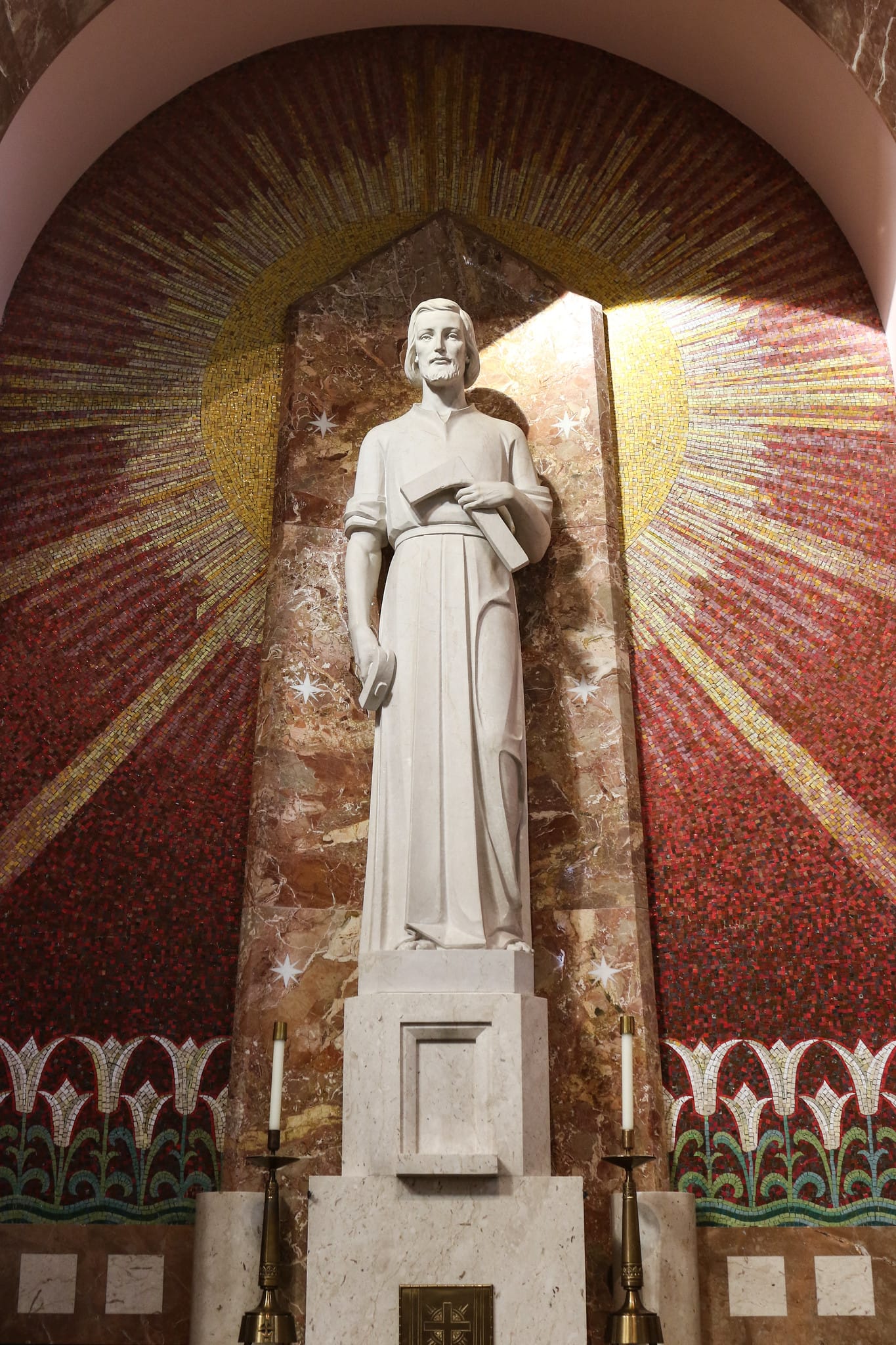 Saint Joseph the Worker / Fr Lawrence Lew, O.P., Flickr, CC BY-NC-ND 2.0 DEED
Saint Joseph the Worker / Fr Lawrence Lew, O.P., Flickr, CC BY-NC-ND 2.0 DEED2) Saint Catherine of Siena
Catherine, with great determination and without fear, pursued her vocation as a mystic, writer, and defender of the poor and marginalized. This saint can help us discern career decisions and overcome work difficulties!
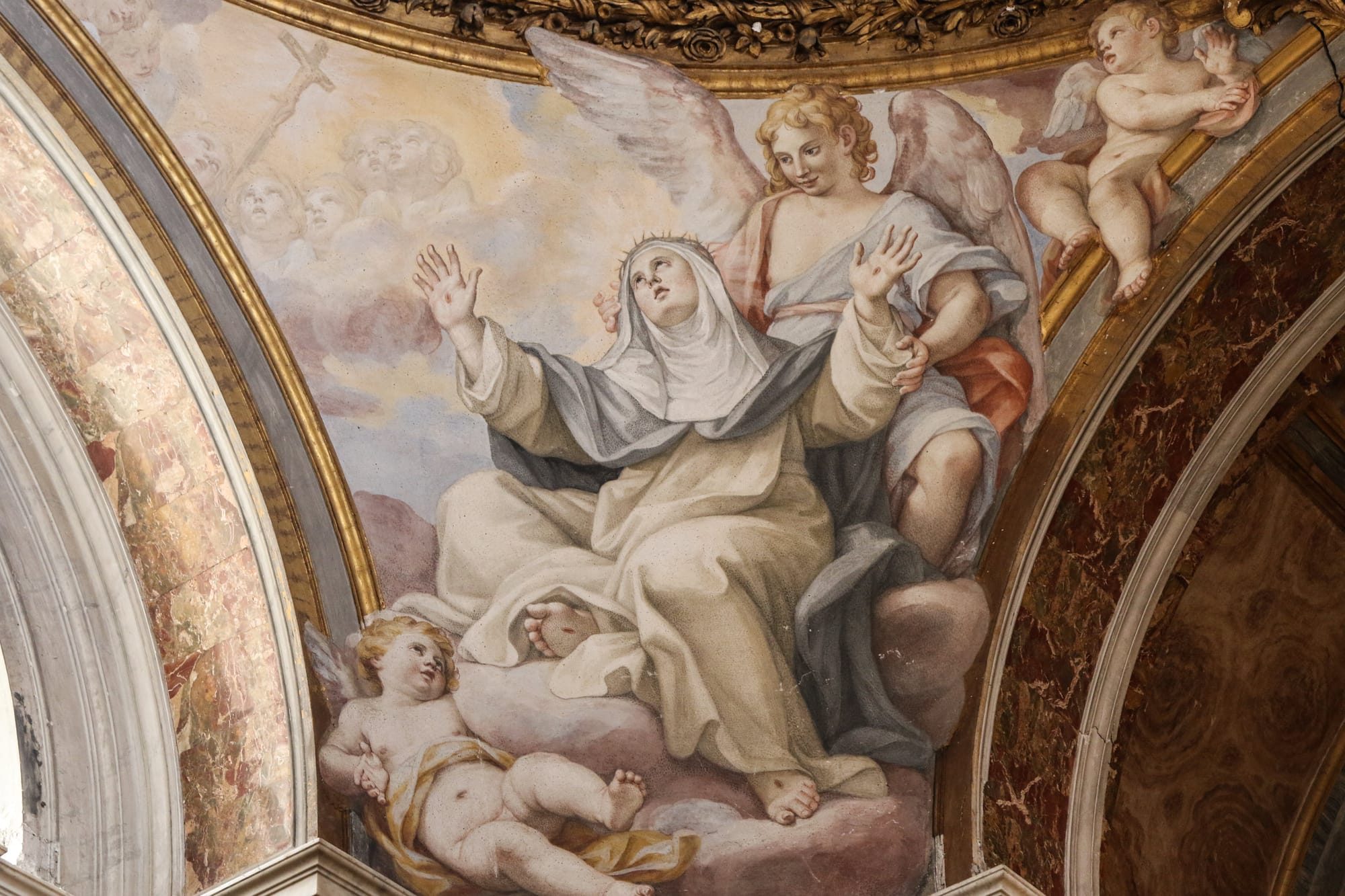 "Saint Catherine of Siena receives the Sacred Stigmata" / Fr Lawrence Lew, O.P., Flickr, CC BY-NC-ND 2.0 DEED
"Saint Catherine of Siena receives the Sacred Stigmata" / Fr Lawrence Lew, O.P., Flickr, CC BY-NC-ND 2.0 DEED3) Saint Gianna Beretta Molla
Finding the balance between work ambitions and family responsibilities can overwhelm us. Gianna is the perfect saint to turn to. She was a doctor, wife, and mother and is the best possible example of having a harmonious and satisfying relationship between career and family life.
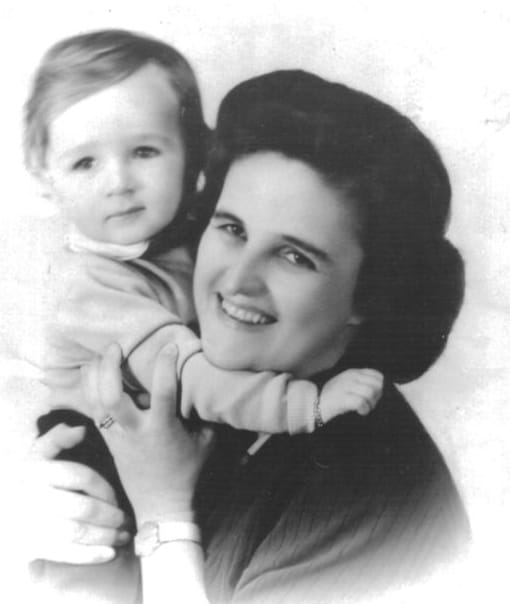 Saint Gianna Beretta Molla / Wikimedia Commons, Public Domain
Saint Gianna Beretta Molla / Wikimedia Commons, Public Domain4) Saint Josemaría Escrivá
The holy founder of Opus Dei is the surest guide to help us not to lose our values.
“The sanctification of ordinary work constitutes the cornerstone of true spirituality for those of us who, immersed in temporal realities, are determined to treat God.”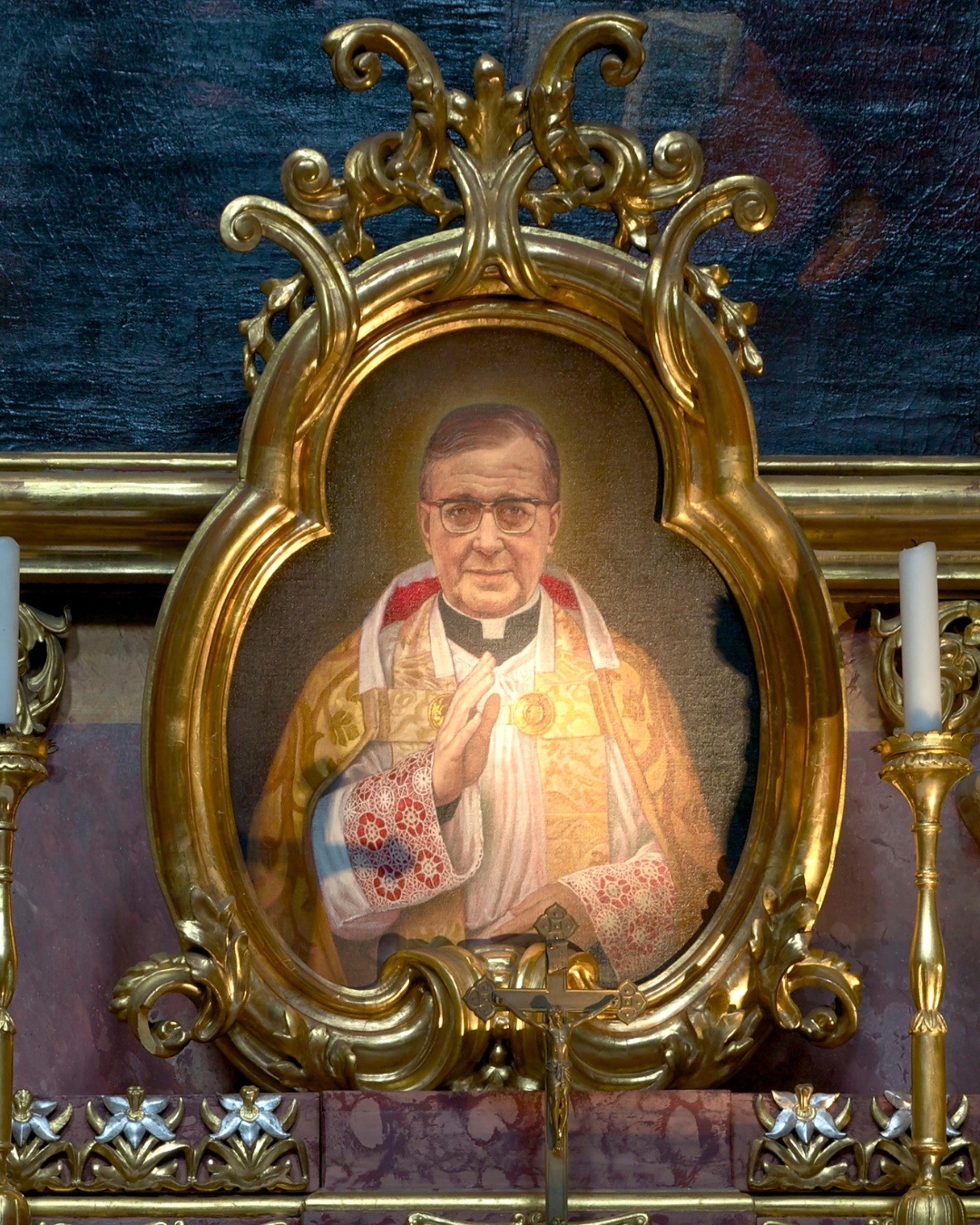 Saint Josemaría Escrivá / Wikimedia Commons, Public Domain
Saint Josemaría Escrivá / Wikimedia Commons, Public Domain5) Saint Teresa of Calcutta
Saint Teresa of Calcutta can help us to be humble, even in the workplace.
"We are at Jesus' disposal. If He wants us to be sick in bed, if He wants us to proclaim His works in the streets, if He wants us to clean the bathrooms all day, that's fine, everything is fine. We must say 'I belong to you.'"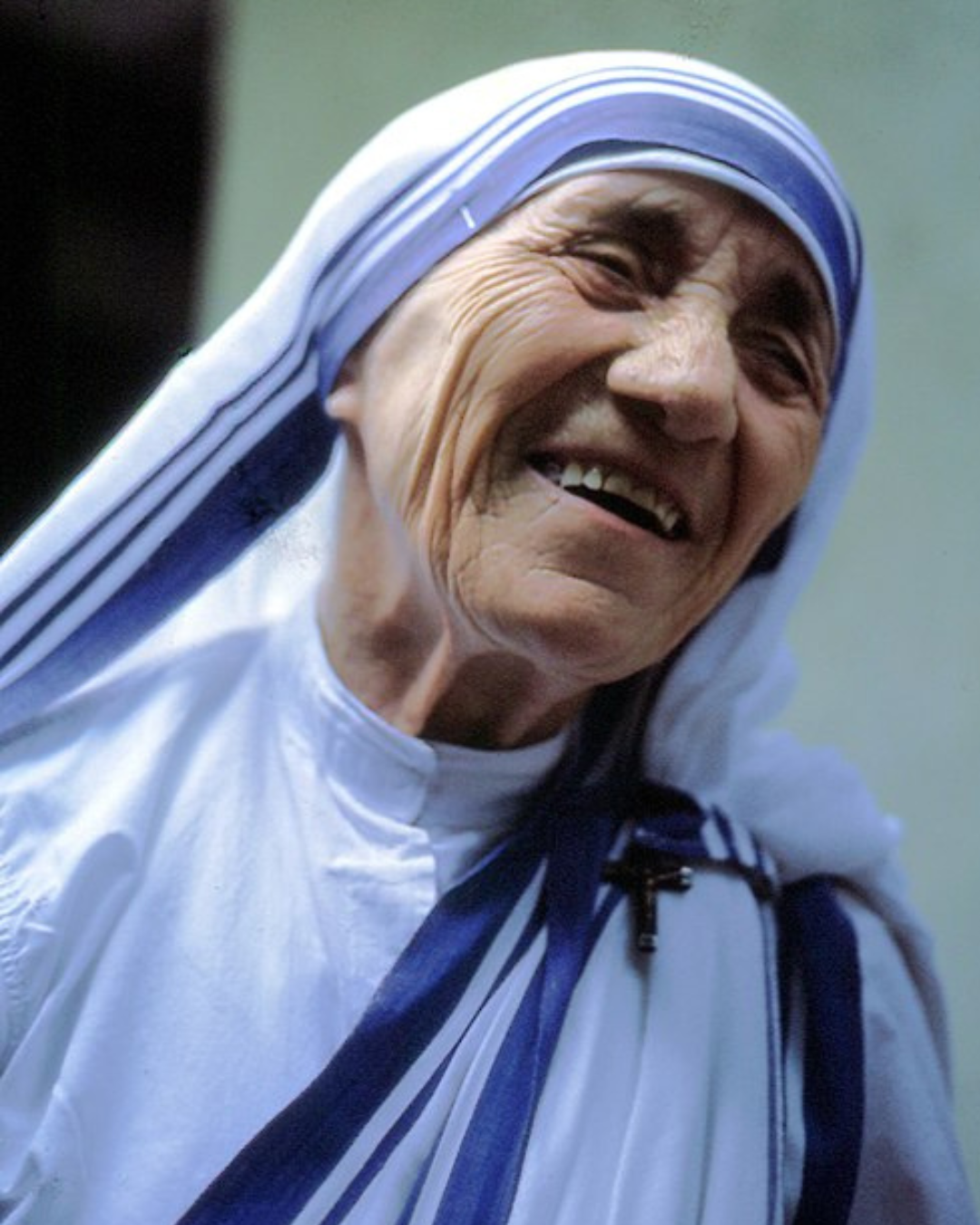 Saint Teresa of Calcutta / Wikimedia Commons, Public Domain
Saint Teresa of Calcutta / Wikimedia Commons, Public Domain6) Saint Therese of Lisieux
Despite her short life, this Carmelite nun always managed to overcome difficulties. Her "Little Way" is not a shortcut to avoid asceticism. She explains the value of suffering and teaches us to find joy in the little things surrounding us, even when our profession is difficult!
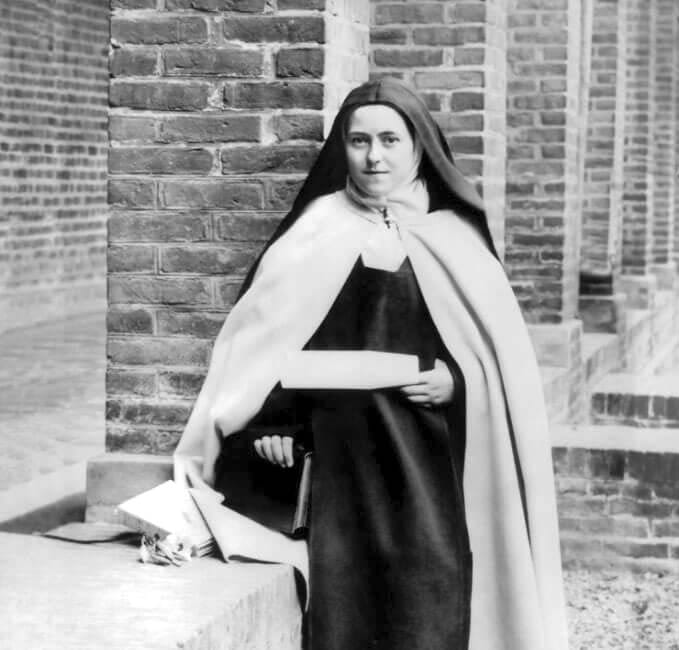 Saint Therese of Lisieux / Wikimedia Commons, Public Domain
Saint Therese of Lisieux / Wikimedia Commons, Public DomainThese saints will be our allies in heaven!
Why a Pope Instituted the Feast of Saint Joseph the Worker - The Unique History Every Catholic Should Know
Do you know the unique history behind Saint Joseph the Worker’s feast day?
This feast is celebrated by the Catholic Church each year on May 1. It is set apart as a celebration of the life and work of Saint Joseph, the earthly father of Jesus Christ.
The origins of this feast day can be traced back to the early 20th century.
Pope Pius XII instituted the feast of Saint Joseph the Worker in 1955 to coincide with International Workers’ Day, a day dedicated to the secular celebration of labor and workers’ rights.
However, the Holy Father recognized the misplaced role of work in society at the time. He believed there was a growing threat of communist and socialist ideals against the dignity of workers and family life.
The devotion to Saint Joseph as a worker dates back to the Middle Ages when Catholic theologians and writers began to emphasize his role as a model of humility, hard work, and dedication.
Saint Joseph was not only Jesus's foster father but also a carpenter by trade.
He worked tirelessly to provide for his family and taught Jesus the skills he needed to become a carpenter. He was a faithful and hardworking man, who lived a life of service to God and his family.
In the 19th century, the Catholic Church began to promote devotion to Saint Joseph the Worker, with Pope Leo XIII issuing an encyclical on the subject in 1889.
You can read the full encyclical on devotion to Saint Joseph here.
He emphasized the importance of Saint Joseph as a model of Christian living, stating that “Joseph became the guardian, the administrator, and the defender of the divine house whose chief he was.”
The feast day of Saint Joseph the Worker has become an important day for Catholics around the world.
This day celebrates the dignity of work and the contributions workers make to society. It is also a day to reflect on the example of Saint Joseph, who worked tirelessly to provide for his family and to serve God.
In addition to the feast day, numerous prayers are dedicated to Saint Joseph the Worker. The faithful often turn to his intercession in work-related matters, employment, and financial stability!
Here is a great prayer to Saint Joseph the Worker:
God our Father, Creator, and Ruler of the universe, in every age you call us to use and develop our gifts for the good of others.
With Saint Joseph as our guide, help us to do the work you have asked and come to the rewards you have promised. Please grant this through Christ our Lord.
Amen.
“Let us love Jesus above all, let us love Mary as our mother; but then, how could we keep from loving Joseph, who was so intimately united to both Jesus and Mary? And how can we honor him better than by imitating his virtues? Now, what else did he do in all his life but contemplate, study, and adore Jesus, even in the midst of his daily labors? Behold, therefore, our model.” -Saint Madeleine Sophie Barat10 Glorious Facts About Italian Mystic & Doctor of the Church Saint Catherine of Siena
Saint Catherine of Siena is a 14th-century Italian mystic and theologian.
Here are 10 things to know and share about her life of profound holiness!
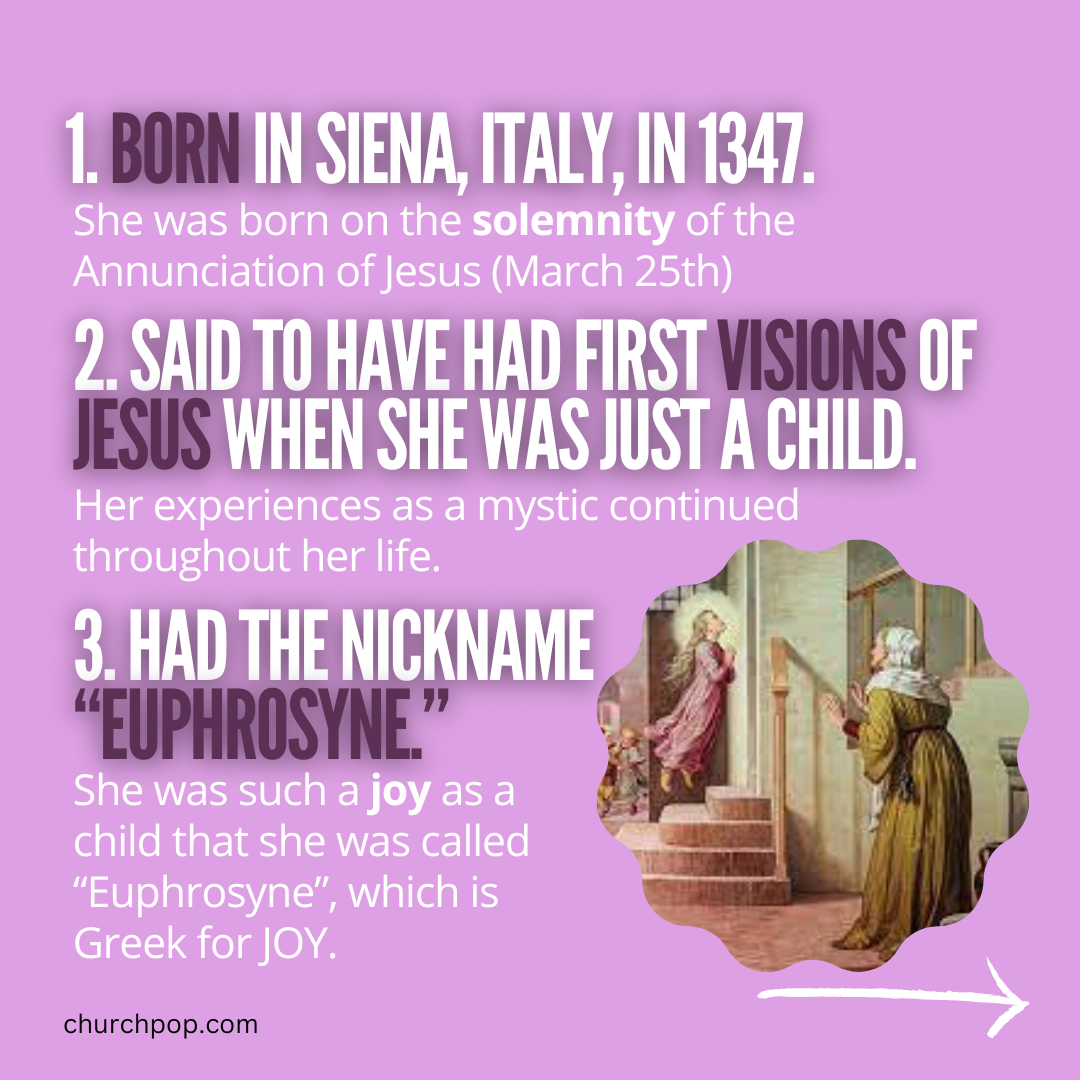 Caroline Perkins, ChurchPOP
Caroline Perkins, ChurchPOP1) Born in Siena, Italy, in 1347.
She was born on the solemnity of the Annunciation of Jesus (March 25))
2) Said to have had her first visions of Jesus when she was just a child.
Her experiences as a mystic continued throughout her life.
3) Had the nickname “Euphrosyne.”
She was such a joy as a child that she was called “Euphrosyne”, which is Greek for JOY.
 Caroline Perkins, ChurchPOP
Caroline Perkins, ChurchPOP4) She was NOT a nun.
Motivated by a vision of Saint Dominic, she entered the Third Order of Saint Dominic at age 16.
5) Spent several years of solitude in her cell within her family’s home
…before living a life of service to the poor and sick in Siena.
 Caroline Perkins, ChurchPOP
Caroline Perkins, ChurchPOP6) Played a role in ending the Avignon Papacy.
She convinced Pope Gregory XI to return to Rome from France!
7) She received the stigmata
…but her wounds were visible to her alone!
8) She had the Gift of Tears.
Pope Benedict XVI explained that this was part of her spirituality – to express an exquisite, profound sensitivity and tenderness.
 Caroline Perkins, ChurchPOP
Caroline Perkins, ChurchPOP9) She is the only lay Doctor of the Church.
The others are all clergy or religious! Pope Paul VI declared her a Doctor of the Church in 1970. Her spiritual testament and teachings are found in "The Dialogue of Divine Providence."
10) She died on April 29, 1380, at the age of 33.
Here is a prayer written by Saint Catherine of Siena:
Eternal God, eternal Trinity, you have made the blood of Christ so precious through his sharing in your divine nature. You are a mystery as deep as the sea; the more I search, the more I find, and the more I find the more I search for you. But I can never be satisfied; what I receive will ever leave me desiring more. When you fill my soul I have an even greater hunger, and I grow more famished for your light. I desire above all to see you, the true light, as you really are.
Amen.
And here is a prayer for her saintly intercession:
O Saint Catherine of Siena, God our Father enkindled the flame of holy love in your heart as you meditated on the Passion of Jesus His Son. Moved by His grace, you devoted your life to the poor and the sick, as well as to the peace and unity of the Church.
Through your intercession, may we also come to know the love of Jesus, bring His compassion to all, and work for the unity of His Church. We ask this in Jesus’ Name and for His sake.
God, You caused Saint Catherine to shine with Divine love in the contemplation of the Lord’s Passion and in the service of Your Church. By her help, grant that Your people, associated in the mystery of Christ, may ever exult in the revelation of His glory.
Amen.
3 Reasons It's Good to Be a Catholic: A Reflection from a Recent Catholic Convert
A few months ago, my wife and I got to know a beautiful couple who were raised Protestant but recently decided to convert to Catholicism. They are preparing to receive the sacraments of initiation.
As part of their OCIA program, they were tasked with writing down why they believe it is good to be a Catholic.
Upon reviewing the husband's reflection, I requested permission to share it anonymously with a wider audience, which he generously agreed to.
He begins his reflection by noting that before he decided to convert, he had long considered himself a "fan of Catholicism" due to its history and traditions, which he writes "have no parallel in any of the Protestant denominations of which I had been a member."
His "point of no return," he states, came after visiting the famous Italian Catholic sites of Venice, Florence, and Rome, where he was faced with "such unimaginable beauty" dedicated to Jesus that he could no longer remain merely a "fan" of Catholicism.
Here are three reasons it is good to be a Catholic, as penned by a fresh convert to the Church.
1) Clarity On Sin
“The first reason it is good to be a Catholic is that the Church is exceptionally clear on sin. This clarity is a natural extension of the Church’s Magisterium– the teaching authority that has no true equal in any other Church.
"The Church comes under fire from all sides, often from professing Catholics, for its moral teachings. These teachings on topics from abortion to marriage are often the subject of controversies from outside and within the Church. Despite the backlash, the Church stands firm on difficult issues.
"A church that would cower from the fight against sin would be a church that would find itself emptied within a couple of generations.
"We do not go to church because it wines and dines us and tells us how good we are; rather, we go to church because it is set apart from the rest of the world.
"The Catholic Church is the Church established by Jesus Christ, God in the flesh, and like Christ, the Church is not meant to be like the world, but something greater.”
2) The Catholic Church is the True Church
“The second reason it is good to be a Catholic is that the Catholic Church is the true Church. My favorite justification of this comes from a quote from Hilaire Belloc:
“The Catholic Church is an institution I am bound to hold divine — but for unbelievers, a proof of its divinity might be found in the fact that no merely human institution conducted with such knavish imbecility would have lasted a fortnight.”"This 'knavish imbecility' demonstrates the guidance of the Holy Spirit in the Church, preserving her through the ages despite humanity’s general ability to mess things up.
"I am hard-pressed to find another example of an institution that has lasted for 2,000 years. The Catholic Church is the Church founded by Christ, given to the stewardship of Saint Peter, and passed down through a line of apostolic successors to our current pope, Pope Francis. If you must pick a church, it is wise to pick the true Church.”
3) The Sacraments
“The third reason it is good to be a Catholic is the belief in the sacraments given through the Church.
"Many of the sacraments identified by the Church are imitated (often rather poorly) in other churches because they are present in the Gospels as commands from Christ, and Christians rightfully attempt to obey the Lord when He gives commands.
"The Blessed Sacrament, the Eucharist, is reduced by many Protestants to a mere symbol. While their version of the Eucharist might symbolize the real Body and Blood of Our Lord, it is the real thing in the Catholic Church.
Quite simply, when Jesus said 'This is My Body,' He meant it.
"The Church also facilitates the other sacraments– baptism, confirmation, reconciliation, anointing of the sick, marriage, and ordination. Each of the sacraments are crucial forms through which God dispenses His divine grace to us.
"Our Protestant brothers and sisters, if recognizing any sacraments, might recognize baptism and communion as sacraments. More often than not, they have no proper vessel to facilitate reconciliation, ignoring the scriptural command to confess our sins to one another.
"Our Orthodox brothers and sisters have largely adopted the same seven sacraments as the Catholic Church, but the Catholic Church was the first to clearly define them. Why settle for second place?”
Tell us why you think it is good to be a Catholic!
3 Reasons It's Good to Be a Catholic: A Reflection from a Recent Catholic Convert
A few months ago, my wife and I got to know a beautiful couple who were raised Protestant but recently decided to convert to Catholicism. They are preparing to receive the sacraments of initiation.
As part of their OCIA program, they were tasked with writing down why they believe it is good to be a Catholic.
Upon reviewing the husband's reflection, I requested permission to share it anonymously with a wider audience, which he generously agreed to.
He begins his reflection by noting that before he decided to convert, he had long considered himself a "fan of Catholicism" due to its history and traditions, which he writes "have no parallel in any of the Protestant denominations of which I had been a member."
His "point of no return," he states, came after visiting the famous Italian Catholic sites of Venice, Florence, and Rome, where he was faced with "such unimaginable beauty" dedicated to Jesus that he could no longer remain merely a "fan" of Catholicism.
Here are three reasons it is good to be a Catholic, as penned by a fresh convert to the Church.
1) Clarity On Sin
“The first reason it is good to be a Catholic is that the Church is exceptionally clear on sin. This clarity is a natural extension of the Church’s Magisterium– the teaching authority that has no true equal in any other Church.
"The Church comes under fire from all sides, often from professing Catholics, for its moral teachings. These teachings on topics from abortion to marriage are often the subject of controversies from outside and within the Church. Despite the backlash, the Church stands firm on difficult issues.
"A church that would cower from the fight against sin would be a church that would find itself emptied within a couple of generations.
"We do not go to church because it wines and dines us and tells us how good we are; rather, we go to church because it is set apart from the rest of the world.
"The Catholic Church is the Church established by Jesus Christ, God in the flesh, and like Christ, the Church is not meant to be like the world, but something greater.”
2) The Catholic Church is the True Church
“The second reason it is good to be a Catholic is that the Catholic Church is the true Church. My favorite justification of this comes from a quote from Hilaire Belloc:
“The Catholic Church is an institution I am bound to hold divine — but for unbelievers, a proof of its divinity might be found in the fact that no merely human institution conducted with such knavish imbecility would have lasted a fortnight.”"This 'knavish imbecility' demonstrates the guidance of the Holy Spirit in the Church, preserving her through the ages despite humanity’s general ability to mess things up.
"I am hard-pressed to find another example of an institution that has lasted for 2,000 years. The Catholic Church is the Church founded by Christ, given to the stewardship of Saint Peter, and passed down through a line of apostolic successors to our current pope, Pope Francis. If you must pick a church, it is wise to pick the true Church.”
3) The Sacraments
“The third reason it is good to be a Catholic is the belief in the sacraments given through the Church.
"Many of the sacraments identified by the Church are imitated (often rather poorly) in other churches because they are present in the Gospels as commands from Christ, and Christians rightfully attempt to obey the Lord when He gives commands.
"The Blessed Sacrament, the Eucharist, is reduced by many Protestants to a mere symbol. While their version of the Eucharist might symbolize the real Body and Blood of Our Lord, it is the real thing in the Catholic Church.
Quite simply, when Jesus said 'This is My Body,' He meant it.
"The Church also facilitates the other sacraments– baptism, confirmation, reconciliation, anointing of the sick, marriage, and ordination. Each of the sacraments are crucial forms through which God dispenses His divine grace to us.
"Our Protestant brothers and sisters, if recognizing any sacraments, might recognize baptism and communion as sacraments. More often than not, they have no proper vessel to facilitate reconciliation, ignoring the scriptural command to confess our sins to one another.
"Our Orthodox brothers and sisters have largely adopted the same seven sacraments as the Catholic Church, but the Catholic Church was the first to clearly define them. Why settle for second place?”
Tell us why you think it is good to be a Catholic!
'The Witness of Mac Sinise': Catholic Actor Gary Sinise Tells Story of Late Son Who Battled Rare Cancer
Gary Sinise, a father, actor, producer, and the founder of the Gary Sinise Foundation joined "The World Over With Raymond Arroyo" to discuss his late son, Mac Sinise’s battle with cancer and love of music.
According to his father Gary, Mac began drumming at the age of nine and often performed with his father’s Lt. Dan Band as a substitute drummer. He graduated from the USC Thornton School of Music where he studied composition and songwriting.
Gary tells Arroyo that after Mac graduated and continued with his music, he was not as happy as he thought. Mac came home to regroup and Gary introduced him to a Catholic counselor.
“It was Bishop Robert Baron who confirmed Mac into the [Catholic] Church in 2017. This was probably 14 months before he was diagnosed with cancer. The Church and his faith…became such a big part of his life."Mac was diagnosed in 2018 with chordoma, a rare form of tissue cancer. After experiencing extreme pain and discomfort, Mac was sent to a spinal surgeon for CT scans. It was then that an orange-sized tumor was discovered on his tailbone.
“Unfortunately, about eight months later, we found out that the cancer came back and it was starting to spread. Then, we found out right around Christmastime in 2019 that there was more tumor on his neck. So he's going to have to go in early 2020 and get another surgery on his neck to remove the tumor.”
Gary notes that Mac had multiple procedures to remove tumors and spent several months in the hospital. However, after removing the tumor from his spine, he experienced damage to his right side.
“By the time he got home, he was now in a wheelchair," Gary explains. "He's doing multiple different drugs that they're trying him on to fight the cancer but there are no drugs for chordoma.”
Mac’s friend, Oliver Schnee, whom he had lost touch with, began sending Mac text messages and voicemails. Schnee stated that Mac did not respond, but after sending him some old photos he came across from their younger days at Disneyland, he finally replied. The two planned to meet and catch up, however, Schnee hadn’t yet heard the news about Mac’s health.
“I drove to his house, [and] my heart broke when I saw Mac. Nothing could have really prepared me for just how heavy it was, especially knowing that he was a drummer and now being paralyzed he couldn't even play his instrument as a form of catharsis. That really hit hard," Schnee tells Arroyo. "But what I did notice was that his attitude and his spirit was still incredibly upbeat. It was very admirable and inspiring to witness.”
Mac stated:
“I was trying to write music and stuff again and I had stopped quite a bit. Just been focusing on trying to get my health back in shape and just to fight this battle of cancer, and in the process, writing music has been a huge therapy for me.”Mac found an old piece of music he left unfinished in college that he hoped to complete with a full orchestra. After sending the music to Schnee and taking note of Mac’s health, the two decided to finish the project.
“It was this wild mixture of his body failing, but mentally, creatively, [and] spiritually he's still going, and there's still a lot of music inside him that wants to come out and that needs to come out," Schnee shares.
"Since he started working on this project, he is back to being Mac. He's smiling again, he's waking up looking forward to the day ahead of him, and he rediscovered his purpose.
"Then he called and he said, 'Hey man, I need to finish this.' And I went, 'What do you mean?’ He's like, ‘This project is keeping me going. It's keeping me alive. I'm rediscovering my purpose so can we do a whole album.’ I said, 'Let's do it.'”
Schnee shares that Mac called him again, hoping to record with his dad one last time.
“That was one of the most powerful and incredible moments through the whole last 12 months was being in Blackbird Studios. Something kicked into high gear, adrenaline or what, but he was able to play the song from top to bottom. When he couldn't play 15 seconds a few weeks ago, he was able to play the whole song top to bottom.”
Gary states, “Mac wanted to keep living in spite of the damage that was being done to him by the disease and every moment that he had that he was feeling good he was taking advantage of it.”
“Those days in the studio you can see he was alive in the studio. When you see those videos and he was enjoying those moments, his faith really sustained him a lot," Gary continues.
"If you look in his Bible and you look in some of the books that he was reading, he was constantly underlining things that really jumped out to him and meant something to him. When I sit and read some of the things, it's like Mac just telling me stuff. It's like messages.”
Mac Sinise died on Jan. 5, 2024, at the age of 33.
Gary mentions that his experiences at the Gary Sinise Foundation, working with families and dealing with the loss of loved ones, helped him gain strength and courage for what was to come.
“I prayed on it, and you know, we have a strong family…our faith has been good to us and strong for us.”
Watch the full segment on EWTN:
Click here if you cannot see the video above.
Mac Sinise’s album, "Resurrection & Revival" can be purchased here.
What Could Possibly Be More 'Aesthetic' Than Catholicism? Why True Beauty is Found in Our Faith
Aesthetic is one of the buzzwords we often hear these days. Social media sites, such as TikTok, X, Instagram, and Pinterest are flooded with publications with this hashtag, and many users - especially women - want to make aesthetics a lifestyle.
What does it mean to be aesthetic?
"Aesthetic" is an English word that comes from the Greek "aisthetikos", meaning “of sense perception.”
The meaning that perhaps best describes the popular trend would be “of or relating to the appreciation or perception of beauty.”
Nowadays, the aesthetic trend is used to refer to what is especially beautiful and pleasing to the eye. The aesthetic applies to decoration, fashion, and even what we do daily.
It ranges from how we comb our hair, the makeup we use, the clothes we wear, and the activities we do (like serving ourselves a coffee or retouching a matching photo with emojis).
The hashtag #aesthetic appears in over 30 million TikTok videos (no exaggeration). Minimalism, vintage, and flirty styles prevail in this trend.
People - especially girls - who consider themselves aesthetic, are attracted to the pretty, and the pleasant, and this style makes them feel happy.
We can perceive this taste because we are naturally captivated by what is simple, clean, calm, and photogenic, and what is “game” - the aesthetic.
We want to see and organize or decorate our spaces like this because we want this to reflect and represent us. We seek to make our exterior aesthetic by bringing out our best style on social networks and allowing others to admire that beauty.
Since before Christ, the topic of beauty has already challenged great thinkers.
For Plato, beauty was identified with the good and was the “supreme idea,” while for Aristotle, beauty was pleasing to the eye and an essence valuable in itself.
So what is really aesthetic?
Even if we try, we will not always be “Instagrammable,” nor will we please everyone. The problem is that sometimes we overlook the fact that the most aesthetic thing we have is our inner beauty.
We are beautiful by nature (it doesn't matter if we are not aesthetic for social media) because true beauty does not depend on the taste of the subject, but on that beauty that is inscribed in the depths of our being.
Things are beautiful because they are ordered, and similar because they have an internal link that gives rise to a whole, well-crafted, and harmonious unity (paraphrasing Saint Augustine).
Beauty consists of the whole being present in the fragment through a precise correspondence between the parts that compose it.
If we are beautiful it is because we participate in the image and likeness of the beauty of God.
We are more than aesthetic, because we have an objective beauty that is real, although for some, we are not attractive to the eye. The beautiful emerges from the bottom and manifests itself, among other things, in what is aesthetic.
God, human beings, and things are not beautiful because they please us, but they please us because they are beautiful.
God is beautiful, totally aesthetic, Instagrammable, and pleasing to the eye. He and all his works have perfection and order that is beautiful.
Nature, the human being, the Universe, everything that comes from God, has perfect harmony.
Being aesthetic and being Catholic:
March for the Martyrs to Rally for Persecuted Christians with Jim Caviezel as Keynote Speaker in Washington, D.C.
March for the Martyrs, an organization dedicated to supporting persecuted Christians across the world, will hold a rally on Sat., April 27, 2024, in Washington, D.C.
What is March for the Martyrs?
Here's the organization's mission statement:
"Martyrs is For the Martyrs is a 501(c)(3) nonprofit organization that seeks to raise awareness about the crisis of Christian persecution, advocate for religious freedom, and provide aid to victims of persecution around the world."Click here if you cannot see the video above.
The free rally will begin at 3:00 p.m. at the Constitution Gardens on the National Mall.
The rally will "include testimonies from survivors of persecution, praise and worship songs, and prayerful preparation for the March for the Martyrs procession."
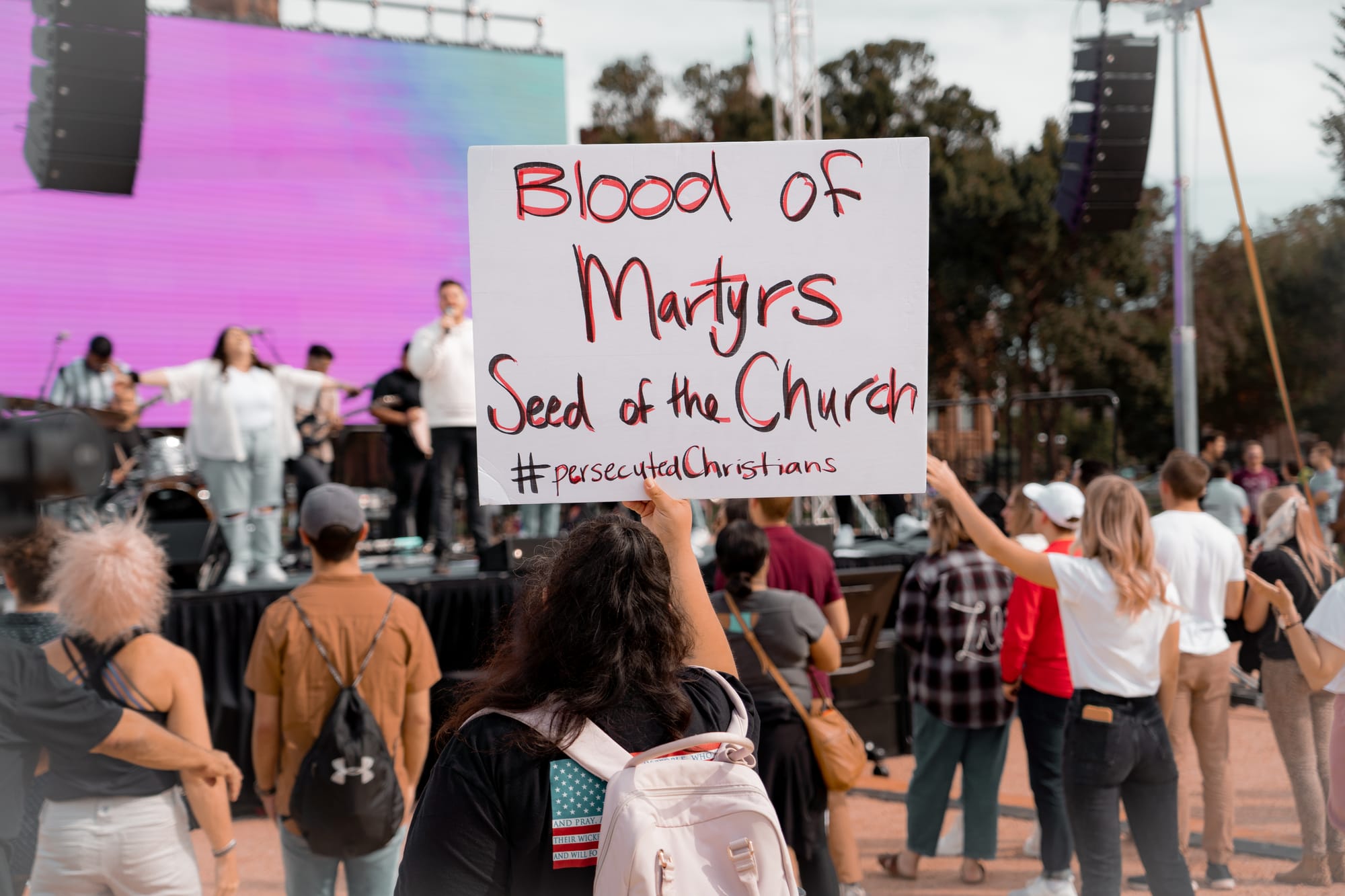 March for the Martyrs 2021 / Photo Courtesy of March of the Martyrs
March for the Martyrs 2021 / Photo Courtesy of March of the MartyrsSpeakers will include Jim Caviezel, Ambassador Sam Brownback, March for the Martyrs founder Gia Chacón, Crescent Project founder Pastor Fouad Masri, Executive Director of Armenian National Assembly Washington D.C. Aram Hamparian, founder of TRAFFIK Anthony Trimino, and Executive Director of In Defense of Christians Richard Ghazal.
March for the Martyrs will then lead a procession at 4:00 p.m.
"This procession is not just a march, but a bold statement of unity, faith, and support for persecuted Christians worldwide," the event's description explains. "It will depart from the National Mall and proceed through the streets of Washington, D.C., and end at the Museum of the Bible."
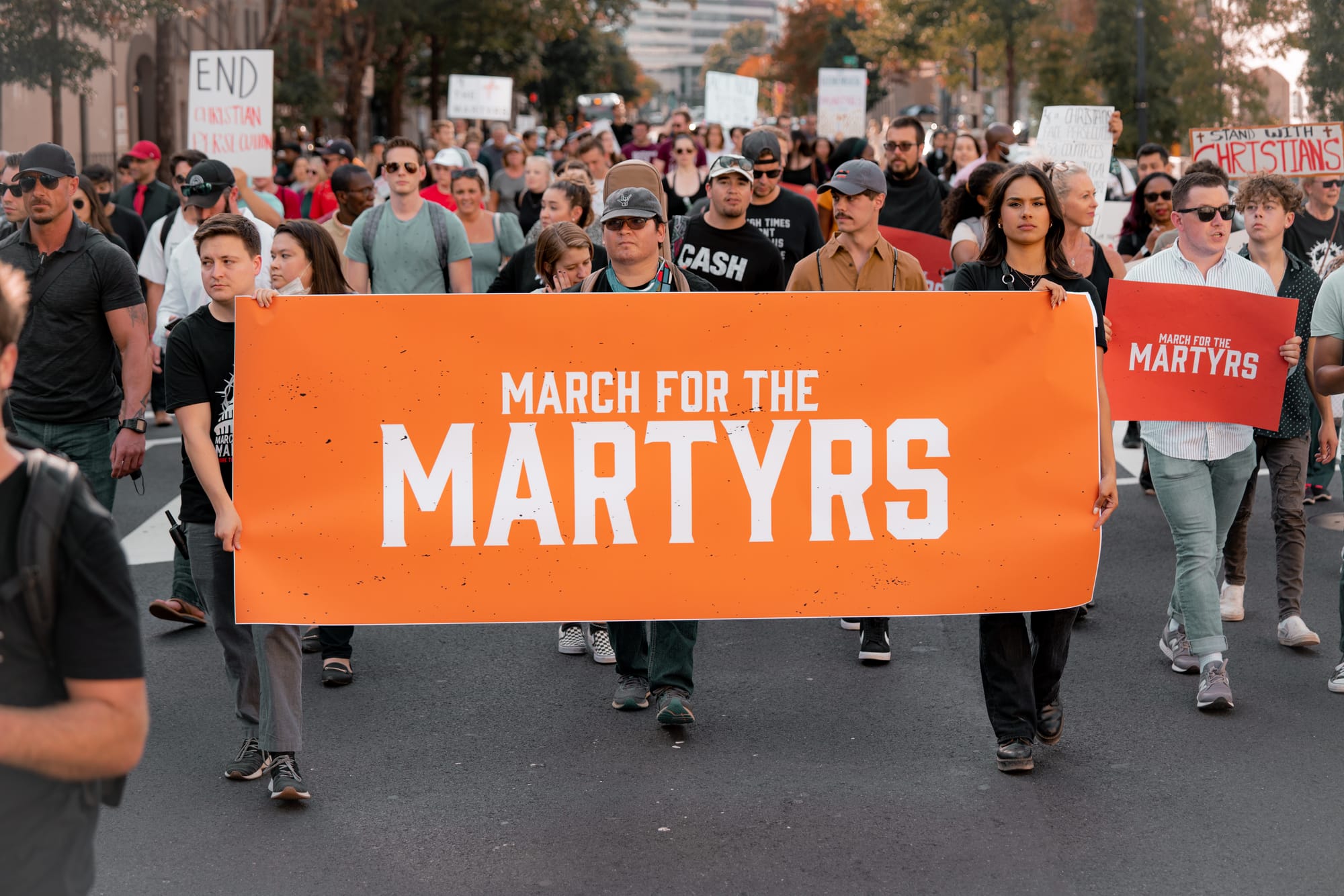 March for the Martyrs 2021 Procession/ Photo Courtesy of March of the Martyrs
March for the Martyrs 2021 Procession/ Photo Courtesy of March of the MartyrsFollowing the 4:00 p.m. procession, March for the Martyrs invites participants to the Museum of the Bible for an evening conference beginning at 5:00 p.m.
"The Night of Prayer for the Persecuted is a powerful experience," the event's description states. "It will include speakers who are experts on Christian persecution and testimonies from survivors. Participants will come together in prayer for our brothers and sisters who are suffering for their faith."
The event will focus on three countries of concern: Iran, Nigeria, and Armenia.
The Global Impact of March for the Martyrs
According to March of the Martyrs founder Gia Chacón, the rally, procession, and conference is not just an event, but "a movement of Christians across all ages and denominations coming together as one voice for persecuted Christians around the world."
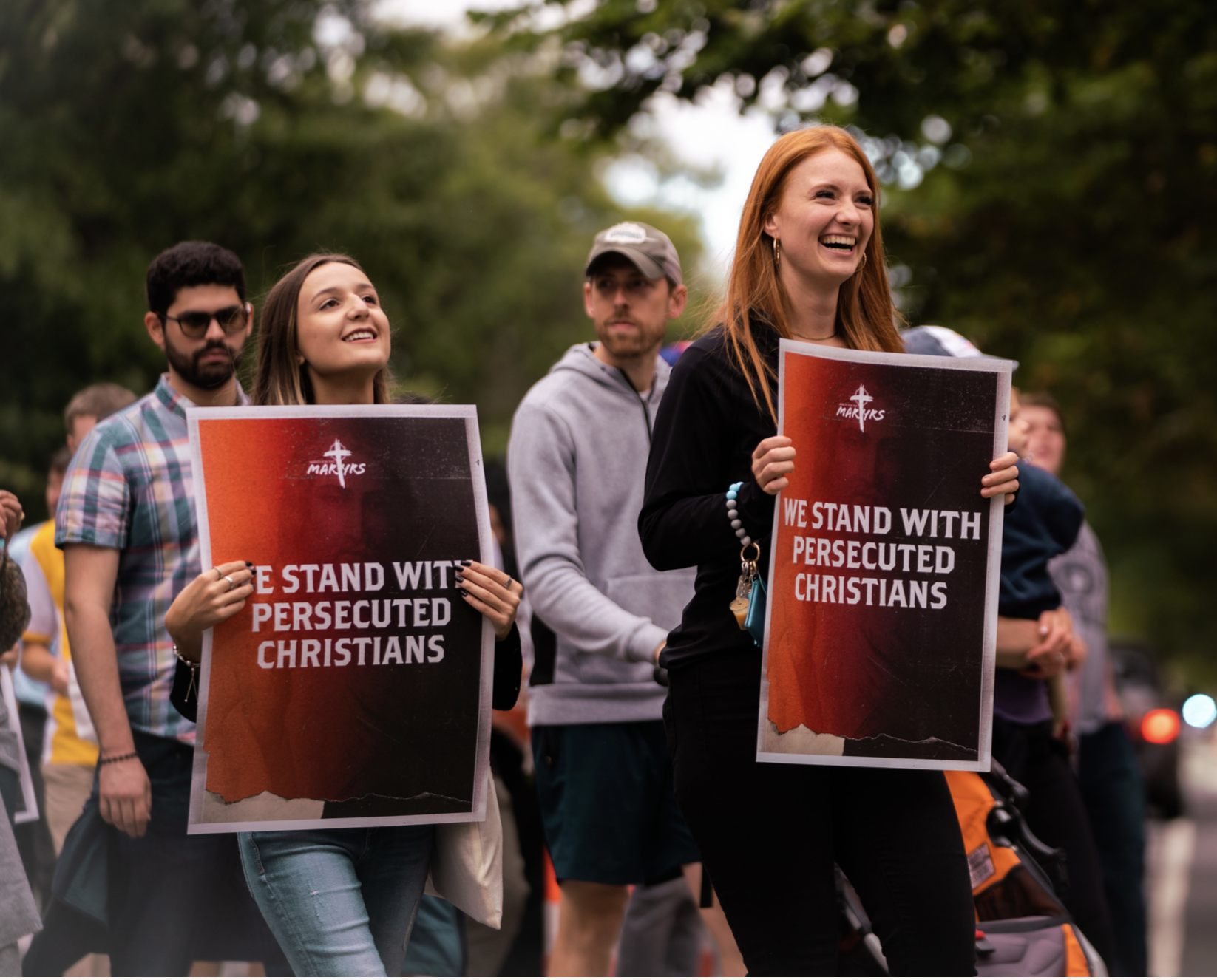 March for the Martyrs 2022 / Photo Courtesy of March for the Martyrs
March for the Martyrs 2022 / Photo Courtesy of March for the MartyrsChacón travels the world offering support and humanitarian aid for persecuted Christians.
She explained that regardless of the aid, the Christians almost always have one request: "Please continue to pray for us."
"March for the Martyrs responds to that need through prayer and solidarity. Yet, it is not just us who have something to give by offering a platform to persecuted Christians," Chacón said.
"Participants of March for the Martyrs walk away feeling deeply impacted by the witness and testimonies from survivors of persecution that speak at the event or the stories from the ground that advocates share; almost always saying they leave feeling emboldened to stand strong and courageous in their faith."
Chacón said that through the organization's advocacy and communication efforts via social media, along with collaborating with the International Religious Freedom space, March for the Martyrs is the "leading voice for persecuted Christians."
"Our movement through March for the Martyrs has opened the eyes of Christians in the West to the reality of persecution, and gives them a tangible way to make a difference in the lives of persecuted Christians."
Click here to register for March for the Martyrs 2024 rally.
A Priest Explains the Most Powerful Tool of the Devil - And How to Defeat It
I believe the most powerful tool the devil has at his disposal is fear.
When I say “fear,” I do not mean “fear of the Lord,” which is a spiritual gift that helps us respect God.
No, I mean the fear which tells us that God does not want what is good for us. I mean the fear that ultimately leads to rebellion. For if I do not trust a person in authority because I do not believe that they are interested in my good, I will rebel against them. It is human nature to rebel against that kind of abusive authority.
Indeed, the devil himself is driven by fear. He feared our creation as somehow diminishing his own. He didn’t trust God and His will. His fear led to rebellion and hate; not just of God, but of us as well. His main tool is what drives him.
In the garden, his temptation is based in fear, a fear the devil himself is motivated by: “God does not want what is good for you. Don’t trust Him.” It is why the first emotion Adam and Eve feel after the fall is fear (they notice they are naked) and that fear leads them to try and hide from God.
Fear is the biggest reason why Catholics do not evangelize.
We are afraid of rejection, of having our lack of knowledge of the faith exposed, of persecution, of having to step out from society. Indeed, to evangelize is to say what the world offers is insufficient. That might as well expose us to ridicule, persecution, or rejection. It might as well expose our own lack of knowledge.
Fear is what destroys vocations.
A young man or woman will fear rejection, accusation, loss of independence, and various other things. They will be shown the absolute worst examples: unfaithful priests, unhappy married people, bitter religious, [or] criminal behavior. They will be told this is the norm and who they will become should they follow such a road. Fear will be cultivated until even the thought of seeking God’s will is yanked up by its roots.
Fear is what destroys our liturgies.
Fear? Absolutely! Fear that I won’t get anything out of it, fear that people will leave, fear that I will be seen as irrelevant, fear that I will be seen as dated, etc.
Fear causes us to put the focus on ourselves. It insulates us. If my modus operandi is self-protection/self-pleasure/self-satisfaction, they all scream to God, “I do not trust you! I have to look out for my own good!”
Because proper worship is focused away from ourselves and towards God. If I do not trust God, then Mass either becomes placating an unfair God, or a completely disposable event. Why worship something that is not looking out for our good?
We are told 365 times in the Bible to not be afraid.
God knows what fear does to us. Since He actually does love us and wants what is good for us, he tells us to trust Him – to have courage and strength. He knows fear will stall us and eventually and eternally destroy us.
Not to sound like Yoda, but fear leads to anger. It leads us to darkness. Fear leads us to rebellion and despair. It leads us to an emptiness and dissatisfaction with life. It leads us to strike out against those not bound by fear.
The devil knows this. He is the penultimate example of “misery loves company.”
Fear is overcome with faith - one decision at a time.
Fortitude, a cardinal virtue, when driven by the theological virtues of Faith, Hope, and Love spurs us to reject fear. It gives us the courage to endure with joy whatever those still in fear will throw at us.
Live in fortitude infused with faith, hope, and love and evangelization and vocation will not only be something no longer run from, they will be something desired.
Live in fortitude infused with faith, hope, and love, then the worship of God, and not the entertainment of man, will become the focus of our liturgies again. Prayer will not be seen as a burden to appease God, but as a longing for growth in our relationship with God and the Body of Christ.
The virtues, though, are disciplines by which we consciously decide what we want to be. We must decide to trust God choice by choice, surrendering our will to His providence. The coldness of fear gets replaced with the fire of love.
It is your choice. God has one plan for you. The devil also has a plan for you.
Which plan you follow will be taken step by step by whether you give into or rise above fear.
Actor Rob Schneider is Making a Film About the Shroud of Turin: 'It Was Breathed Into Me'
In an exclusive interview with ChurchPOP, actor and comedian Rob Schneider announced a project he's been working on for the past five years: a movie about the Shroud of Turin.
"Hopefully, this movie about the Shroud will happen because I think it's about faith," Schneider told ChurchPOP editor Jacqueline Burkepile in an interview published on April 16.
"I think we need that and to bring more people to it and not necessarily to preach to them, but to just show the actual sacrifice and to talk about what the core of Christianity is - loving others," he continues.
Schneider then explains that the premise of the movie, which he hopes to begin filming in 2024, is about shroud expert Joe Marino and his wife, "who basically proved scientists tested the cloth in the wrong place."
"They didn't put into their equation in the carbon dating that the French nuns had repaired this cloth with newer cloth and it is what the French called an 'invisible weave.'
"If you can imagine the dedication of these French nuns in preparing the actual burial cloth of their Lord, that they would dedicate absolute perfection in their work and they did. And that was where it was tested.
"And so they had new cloth and new strands of cloth that were weaved into this 2000-year-old Egyptian linen. And so that threw off the carbon dating. So each of the pieces that were cut, and the deeper that it went in, the further it went back in time.
Schneider then said "the best description" he's ever heard about the Shroud of Turin is that "it's the receipt" for Christians.
"It's such a great story," he said. "Hopefully, it will bring more people into the faith, or at least an openness to what this really is: the burial cloth of Jesus Christ...it's actual tangible proof."
The actor also explains that the process of making and researching for the film impacted his decision to become Catholic. He began working on the film "as an entertainment piece," but it turned into a "broadening" of his faith.
"It became the broadening of my faith and it became a powerful thing that kind of – I don't know how else to say it – but it was breathed into me, and then it from there, it was really the beginning."
Watch the video below:
How a 20th-C. Mystic Led Mother Angelica to Miraculous Healing Through Saint Therese of Lisieux
In 1943, Rita Rizzo (later EWTN foundress Mother Mary Angelica) was 19 years old and had severe gastrointestinal problems.
She couldn’t eat anything but crackers, tea, and stale bread. She endured severe stomach spasms and pain.
“I couldn’t sleep or eat. My hands would shake and my left arm would get numb,” Mother Angelica wrote for Raymond Arroyo’s book, "Mother Angelica: The Remarkable Story of a Nun, Her Nerve, and a Network of Miracles."
Her only alleviation from pain was a surgical corset that tore into her skin causing blisters.
One family friend suggested Rita meet Rhoda Wise, an alleged 20th-century stigmatist, mystic, and Catholic convert.
Wise also once endured severe health problems, including a ruptured bowel and wounded abdomen, as well as a severe leg wound. She suffered so much that she prayed for her own death.
Rhoda Wise’s Visions of Jesus and Saint Therese
In 1939, Wise said Jesus and Saint Therese appeared to her in her Ohio home. Saint Therese came to her bedside, opened her abdominal wound, and spoke to her.
“She then placed her hand on my abdomen and said: ‘I am the Little Flower. You have been tried in the fire and not found wanting. Faith cures all things.’”
Wise said following that moment, she “was astounded to find that the wound on my abdomen was entirely closed…The ruptured bowel, too, was entirely healed.”
Wise said Saint Therese appeared to her an additional time, also healing her severely wounded leg.
“The Little Flower stood by my bed and said, ‘That is a very little thing. Stand up and walk.’
“I placed my feet on the floor and stood up, and as I did so the cast, over a foot long, split open from top to bottom, and I easily stepped out of it.
“The Little Flower then said: ‘Go to church now,’ and immediately disappeared.”
(According to Arroyo’s book, “Msgr. George Habig, Wise’s reluctant spiritual director, told friends and church officials that he believed the healings to be authentic and supernatural.”)
Wise also received the stigmata, suffering Christ’s wounds on the First Friday of every month from 12 p.m. – 3 p.m., from 1942-1945. She also suffered “invisible wounds” until she died in 1948.
Rhoda Wise Meets Rita Rizzo (Mother Angelica)
Rita’s mother, Mae Rizzo, wanted Rita to meet with Wise.
Rita had her speculations because her faith was not developed. However, Mother Angelica said she was “so happy that my mother wanted to go that I figured, what can I lose?”
When Rita and her mother arrived at Wise’s home, Wise suggested Rita sit in “Our Lord’s chair,” where she said she had conversations with Jesus.
During their visit, Wise gifted Rita with prayers to Saint Therese. She told her to pray this novena and make a sacrifice along with her prayers. She also requested that Rita spread devotion to the Little Flower if God cured her.
Rita prayed and sacrificed as Rhoda requested for the novena. Throughout the novena, however, Rita’s stomach pain and spasms continued.
After the novena ended, on Jan. 17, 1943, Rita experienced the most extreme pain and spasms she had ever known that morning.
“It seemed that something was pulling my stomach out,” Mother Angelica told Raymond Arroyo.
At the time, Rita’s surgical corset was removed due to skin blisters, and because of her severe pain, she thought about putting it back on before getting up.
However, she heard a voice say, “Get up and walk” without the corset.
Although she continued experiencing pain in her stomach, she said “It was different from the other pain.”
“I knew I didn’t need that brace and I knew I was healed.”
“When the Lord came in and healed me through the Little Flower, I had a whole different attitude,” Mother Angelica added.
“I knew there was a God; I knew that God knew me and loved me and was interested in me. I didn’t know that before. All I wanted to do after my healing was give my life to Jesus.”
Rita did not know how to give her life to Jesus, so she leaned on Wise, who “became her model of sanctity and a seminal spiritual influence.”
Mother Angelica then went on to spread devotion to Saint Therese, as she initially promised.
Rita (Mother Angelica) wrote the following about her conversion in a 1943 letter:
“…before I was cured, I was a lukewarm Catholic…now I love [our Lord] so that there are times when I think I will die. When I think of all that He has done for me and how little I have done for Him, I could cry.”Let us remember the lives of Saint Therese of the Child Jesus, Servant of God Rhoda Wise, and Mother Angelica. They are all incredible models of sanctity and holiness!

